The Corne¬ Daily Sun








By JULIA SENZON and ERIC REILLY
Sept. 2 — “The tentative agreement has been ratified, and the strike is officially over,” the UAW Local 2300 website read as of Monday evening.
The United Auto Workers Local 2300 and Cornell have ratified an agreement, endorsed by 77 percent of UAW Local 2300 voters.
Lonnie Everett, a UAW international servicing representative for Region 9, announced the result in a statement posted on the UAW Local 2300 website
“This is a monumental victory, proving that when we come together, we are unstoppable,” Everett wrote.
The statement calls for UAW workers to return to their regular shifts starting as early as 10 p.m. Monday.
Terms of the agreement include a 21 to 25.4 percent wage increase with a cost-of-living adjustment, among other benefits, according to the UAW Local 2300 statement. Altogether, the agreement represents a $43 million contract over the next 4 years.
The agreement follows four months of bargain-
ing and two weeks of strikes, during which Cornell reduced its dining options and recruited former workers to fill the temporarily empty positions.
In an email sent to the Cornell community at noon on Tuesday, administrators encouraged “everyone [to] act with kindness and respect one another’s personal choices, whether that was to strike or to continue working,” as the campus transitions to normal staff levels.
Students without a meal plan that includes swipes were told to continue utilizing non-Cornell dining options, while the University aims to reopen Cornell Dining locations later in the week.
Food trucks will be at various campus locations from 11 a.m. to 3 p.m. on Wednesday to increase meal options for non-swipe meal plan holders.
“Welcome back to those who have been on strike,” the University statement read, “and once again thank you to the countless staff and faculty who helped to fill operational gaps caused by the strike and to the community as a whole for your continued patience.”
By ANUSHKA SHOREWALA Sun Assistant News Editor
Sept. 2 — About 150 members from the Cornell and Ithaca community gathered at 6 p.m. on Monday, Sept. 2 at a vigil held in honor of the six hostages who were found dead in Gaza.
Organized by Cornellians for Israel, the Roitman Chabad Center, Cornell Hillel and the Center for Jewish Living, attendees joined on Ho Plaza and draped American and Israeli flags over their shoulders.
Amanda Silberstein ’26, vice president of the Chabad Center and Cornellians for Israel, began the vigil by discussing the ongoing struggles of the hostages in Gaza.
“We gather here with shattered hearts to mourn the 1,200 previous individuals ruthlessly slaughtered and the 250 innocent souls taken from their lives and dragged to the dark tunnels of Gaza,” Silberstein said. “Over the past 332 days, we have gotten to know about each of the hostages and their faces have become etched into our minds and hearts. This weekend we learned of the tragic murder of the six beloved souls.”
On Oct. 7, 2023, about 1,200 people were killed by Hamas in Israel and about 250 were taken to be held as hostages in Gaza.
On Saturday, the bodies of six hostages were found dead in a tunnel in Gaza — Eden Yerushalmi, Ori Danino, Carmel Gat, Almond Sarusi, Alexander Lobanvi and Hersh GolbergPolin. According to the Israeli Defense Forces, the hostages were killed shortly before soldiers reached them. After their deaths were confirmed, protests erupted across Israel, criticizing Prime Minister Benjamin Netanyahu’s
approach to cease-fire negotiations.
Throughout the vigil, students expressed grief and shed tears as they shared stories of the six hostages, with six students taking turns to speak about each of them.
“Every Shabbos, I pray that when I turn back on my phone after Shabbos ends on Motzei Shabbos, I will see that all the hostages return safely back to their homes and families,” said Yael Schranz ’26, who spoke about Eden Yerushalmi at the vigil. “This Motzei Shabbos I saw the opposite. I saw the terrors that still persist. I saw the life of six beautiful people come to an end after they’ve suffered so much already.”
Netanel Shapira ’25 spoke in honor of Golberg-Polin, emphasizing the importance of remembering him and all the hostages who remain captive. Golberg-Polin was a 23-yearold dual American and Israeli citizen.
“While we can not bring Hersh home alive, it is our duty to bring him everywhere else. And one last thing, though certainly not least — don’t forget any of the hostages,” Shapira said.
The Israeli government believes that there are currently 101 hostages held in Gaza with 35 thought to be dead. Originally, eight U.S. citizens were taken by Hamas, according to All Isreal News. With the confirmation of Golberg-Polin’s death, four U.S. citizens remain hostages in Gaza.
“Say their names, fight for them because the rest of the world refuses to do so,” Shapira said.
After the stories were shared, the gathering observed a minute of silence — ten seconds for each hostage — followed by prayers and singing.
Kayla Singer ’25, co-engagement chair of Cornellians for Israel, expressed that the vigil helped provide her support and served as a reminder of her community.
“For me, when I heard the news, … these are kids in Israel who are just like I am in America and to see an American citizen be killed was very saddening,” Singer said. “I wanted to be near my community at this time and to remember and call for the remaining hostages underneath Gaza in tunnels to be returned home.”
Singer also emphasized the importance of unity in the face of tragedy.
“I think a lot about this war has been a polarizing issue, but the hostages shouldn’t be polarizing,” Singer said. “For people who want to call for the safe and healthy return of
these hostages, these kinds of vigils and places of mourning and places of community can give individuals in the community a space to come together.”
Silberstein highlighted the ongoing plight of the remaining hostages and the importance of these vigils to keep their memory alive.
“There are 101 innocent civilians — beloved individuals who are being held by a terrorist organization — and I think the world needs to know they are not alone,” Silberstein said. “[We] hold these events, these vigils, to come together, say their names, and recognize that they will not be forgotten, that they are in our minds every minute of our lives.”
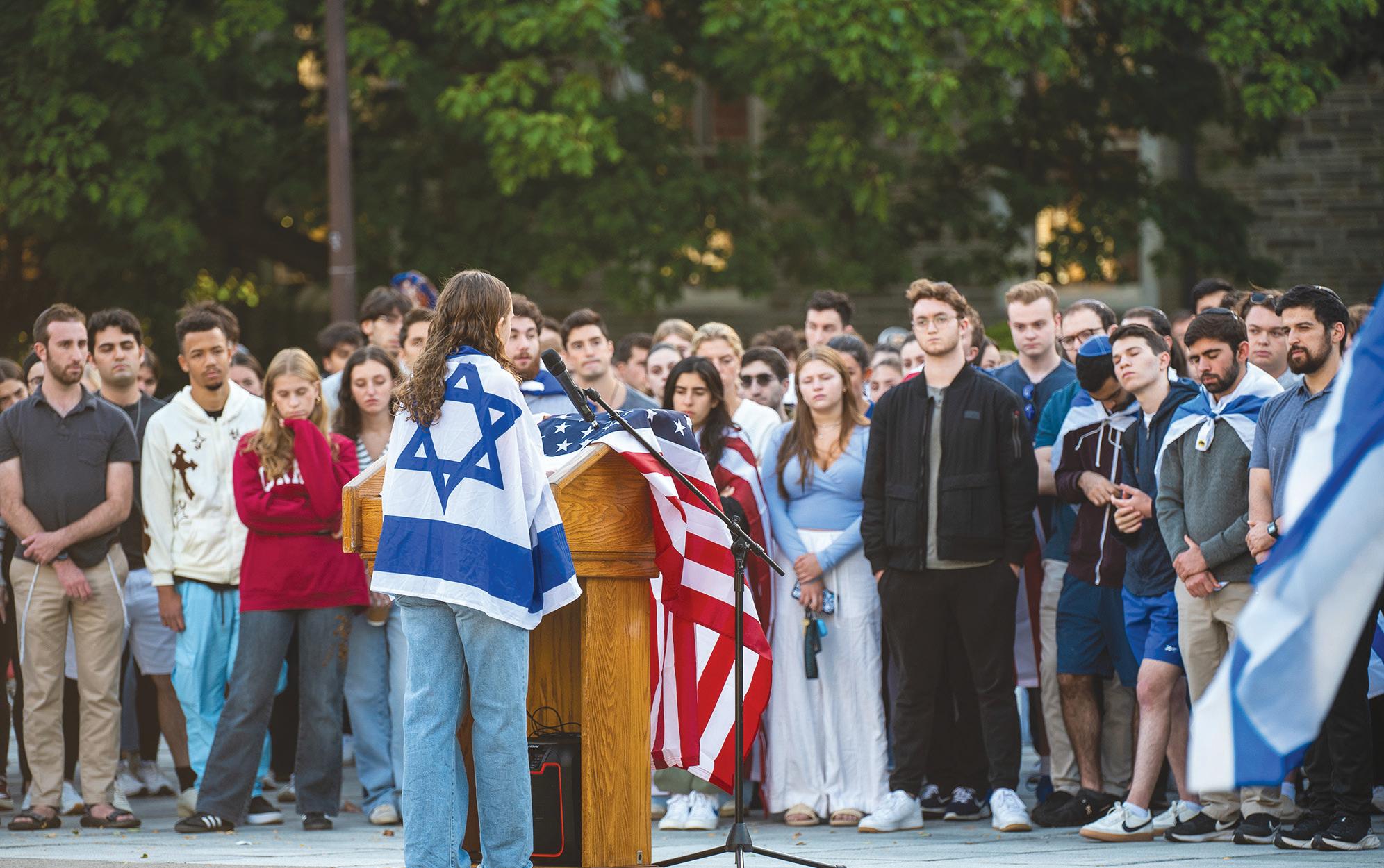
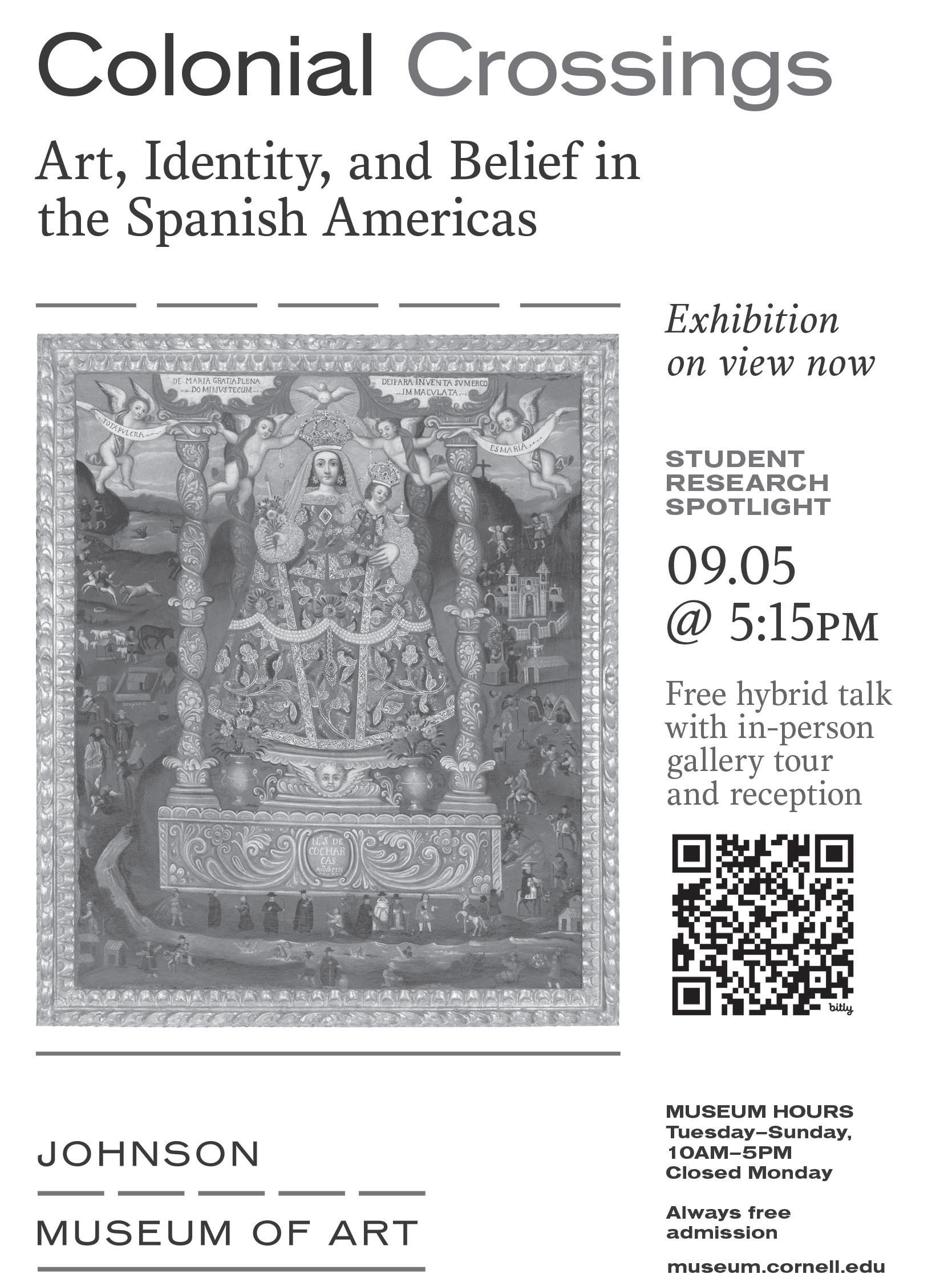
Today
CIT Training: Online Learning 101 9 a.m. - 10 a.m., Virtual Event
Law, Economics and Policy Seminar With Jacob Goldin 11:40 a.m. - 12:55 p.m., 225 ILR Conference Center
The Social Movement to Legalize Same-sex Marriage in Taiwan With Hsiao-wei Kuan Noon - 1 p.m., L28 Myron Taylor Hall
Unearthing and Reckoning With Ukrainian History With Megan Buskey Noon, G08 Uris Hall
Web Scraping in Python 1 p.m. - 1:50 p.m., 291 Clark Hall
Harnessing Ecology and Remote Sensing to Model Airborne Pollen Concentrations With Prof. Dan Katz 3:35 p.m. - 4:25 p.m., 2146 Snee Hall
Africana Studies 2024 Welcome Back Party 4:30 p.m. - 6:30 p.m., 310 Triphammer Road
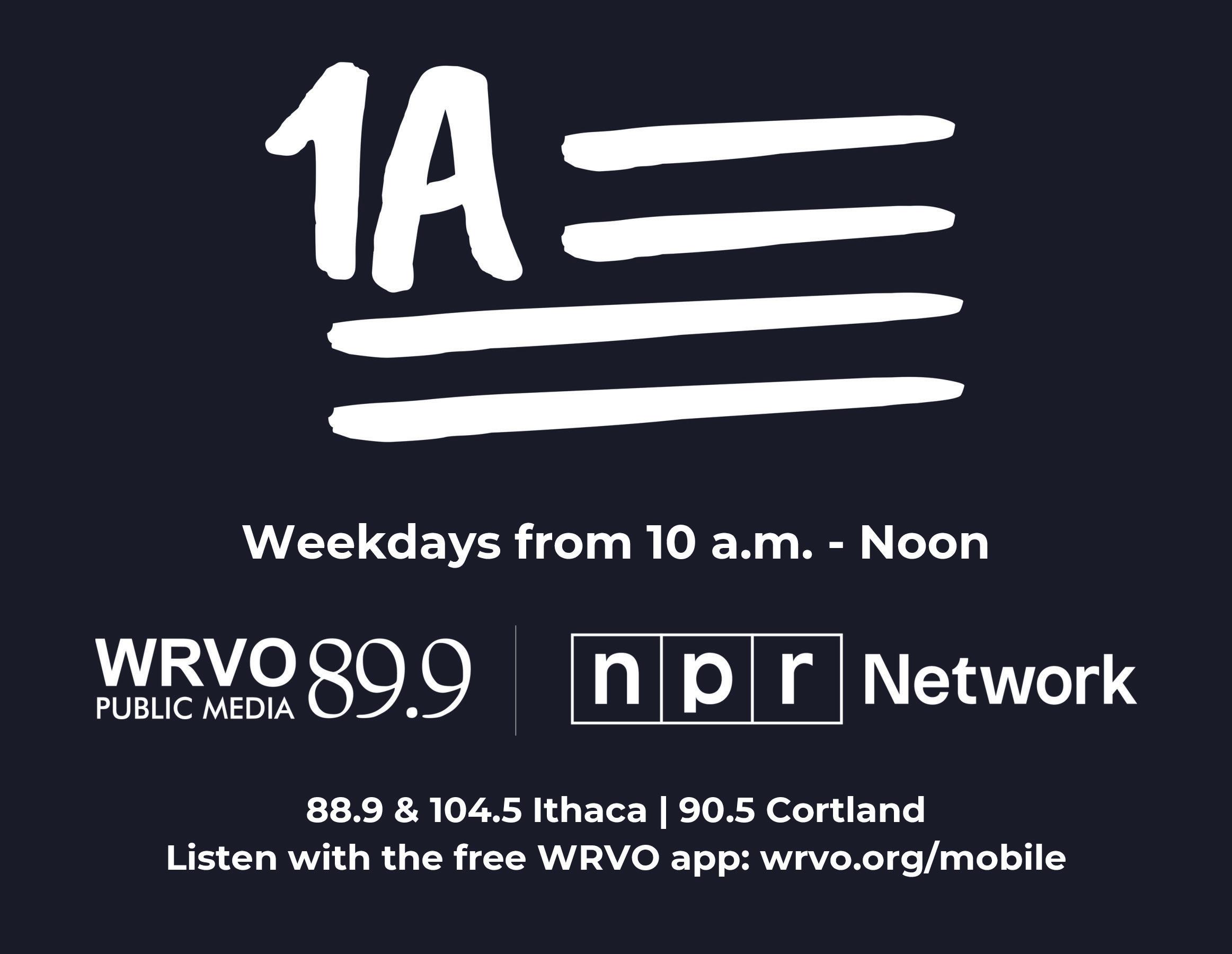
Tomorrow
Joint Macroeconomics and Trade Workshop With Benny Kleinman 11:40 a.m. - 12:55 p.m., 498 Uris Hall
Observation of Disorder-free Localization and Efficient Disorder Averaging on a Quantum Processor With Gaurav Gyawali grad Noon - 1 p.m., 701 Clark Hall
Tracking Digital Surveillance and Repression With Ronald Deibert Noon - 1:15 p.m., G08 Uris Hall
New Developments in Bulk Gene Expression Profiling and Spatial Multiomics With Sayani Bhattacharjee Noon - 1:30 p.m., G10 Biotechnology Building
Training Data: Notes on the Computerization of Southeast Asia With Prof. Shaoling Ma 12:15 p.m. - 1:30 p.m., 640 Stewart Ave Oxo Metal Cubane Clusters in Water Splitting and Bond Activiations
By MING DeMERS Sun Photography Editor
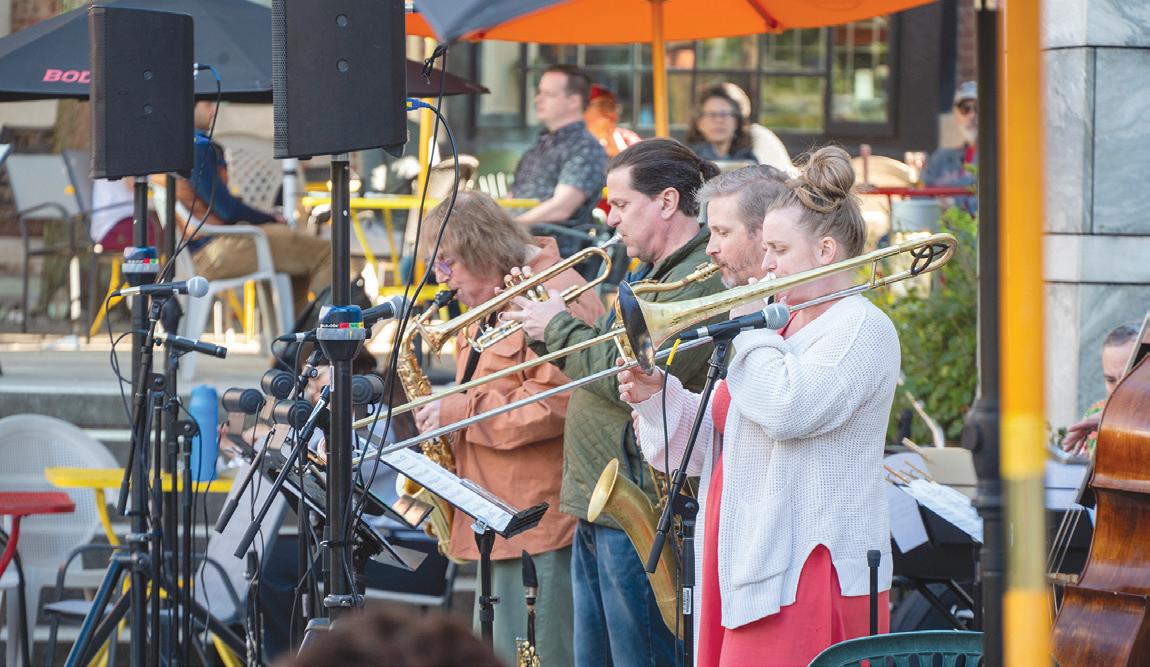
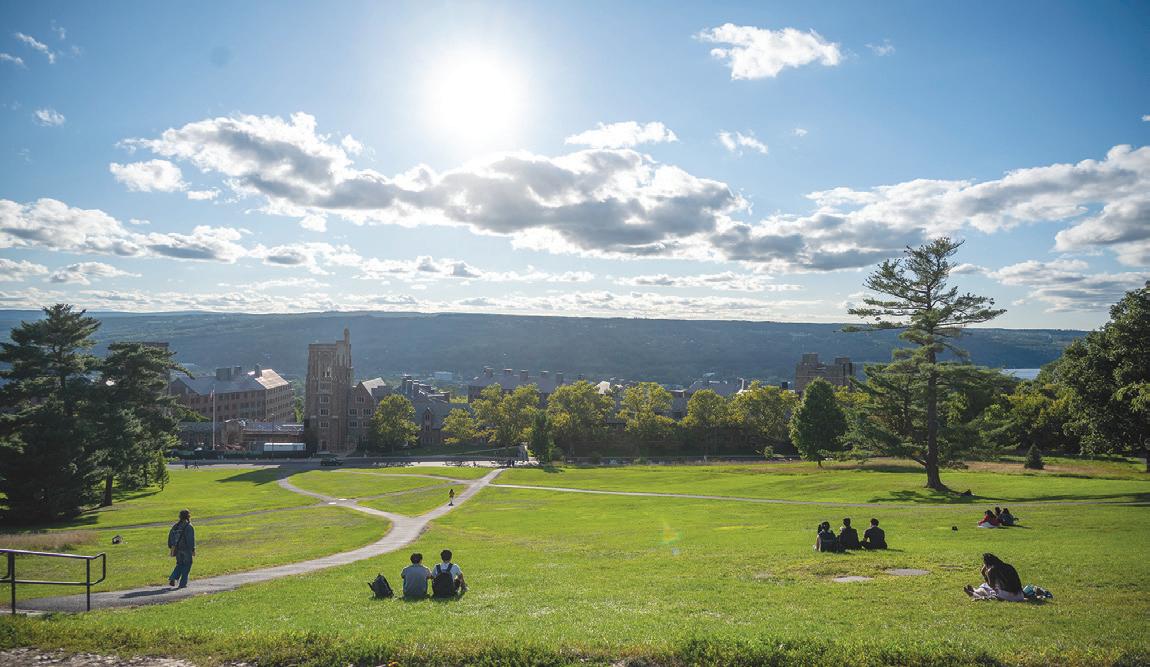
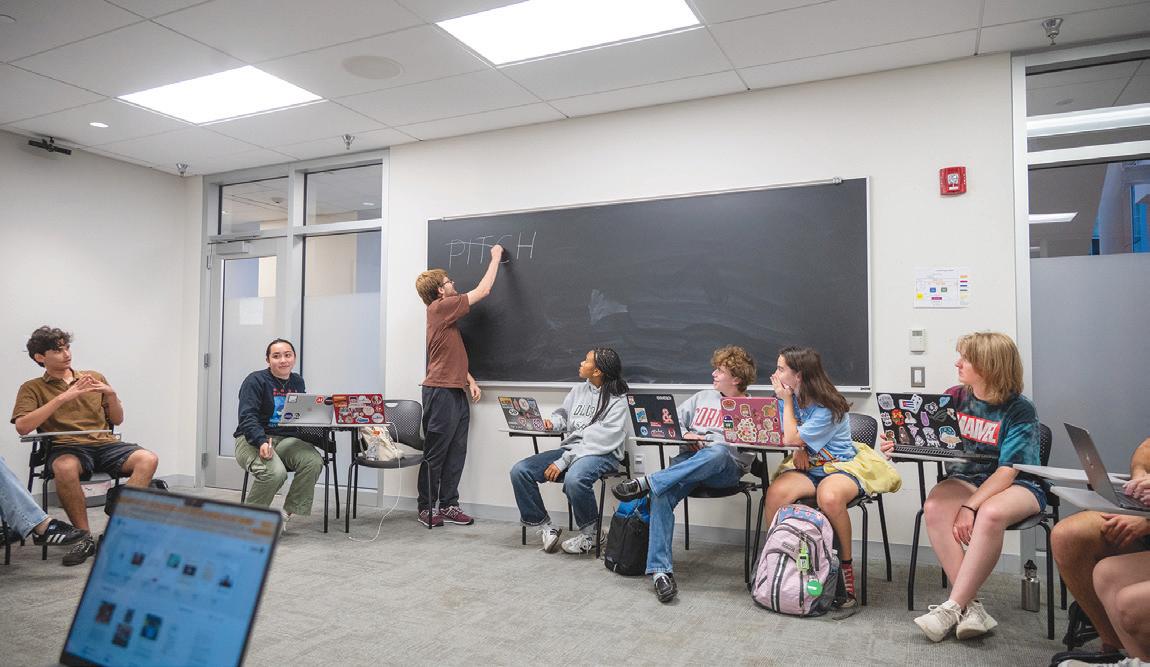



“Class, Status, and Luxury Beliefs”
Statler Hall 165 and live-streamed Tuesday Sept. 10, 5:30pm
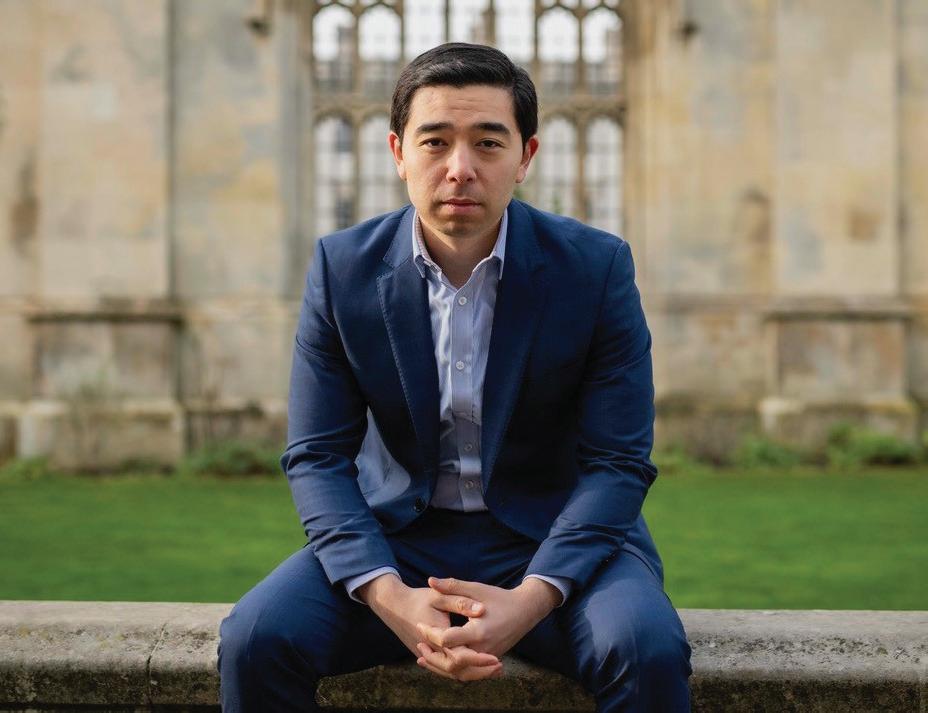
Rob Henderson
Author of Troubled: A Memoir of Foster Care, Family, and Social Class
If you wish to attend online, register at: https://cornell.zoom.us/webinar/register/WN_ghkPz289RVmyM3JOA6m0ew
NOTE: QR Code NOT AVAILABLE in this format. See posters.
Sponsored by Cor nell’s Program on Freedom and Free Societies
By
Sept. 3 — More than four months after allegations of harassment came to light during his unsuccessful bid for Student Assembly president, Getulio González-Mulattieri ’25 sits on the S.A. as an undesignated representative and has faced no punishment or formal charges.
González-Mulattieri told The Sun that he has no plans to step down.
“Yes, I’m staying,” he said after the first Student Assembly meeting of the semester, on Aug. 29, declining to comment further on the matter. Though GonzálezMulattieri lost the S.A. presidential election in the spring to S.A. President Zora deRham, he earned his current seat on the Assembly because presidential runners-up are appointed as undesignated representatives.
The Sun reported last April that a group of first-year women were allegedly harassed by GonzálezMulattieri, then 35, with repeated, unwanted advances and suggestive comments. One of the first-years was 17 when she was targeted by González-Mulattieri, she said.
She told her residential advisor on April 11 that she had been harassed by González-Mulattieri.
The R.A. went on to file a Title IX complaint against GonzálezMulattieri, though the result of that referral is unclear. Several of González-Mulattieri’s influential backers, including former S.A. Executive Vice President Claire Ting and Cornell’s chapter of

Young Democratic Socialists of America, rescinded their support on Instagram after The Sun published its investigation.
According to Assembly rules, there are at least two ways a sitting member can be removed or disciplined. Removal can be proposed during an S.A. meeting by any Assembly member, and if there is a two-thirds majority vote for removal, then the member in question is ousted.
Alternatively, a complaint can be filed with the S.A.’s Office of Ethics by an Assembly member. If the ethics committee deems the individual to be in violation of its policies, it can make a recommendation of discipline to the Assembly to be voted upon.
At time of publication, no official complaint or motion has been filed against GonzálezMulattieri. When asked about González-Mulattieri’s future on the Assembly, deRahm directed The Sun to the S.A.’s Office of Ethics and declined to comment further.
Sophia Arnold ’26, director of the Office of Ethics for the S.A., told The Sun that the ethics committee discussed GonzálezMulattieri’s status on the Assembly at their first meeting of the semester last Sunday, and will continue to monitor the situation.
“Ethics will continue to meet to decide how to handle the matter,” said Arnold, who also writes a column for The Sun about accountability in student politics.
By KATE SANDERS Sun News Editor
Sept. 3 — Voters in Tompkins County and the rest of New York’s 19th Congressional district will weigh in on a tight House race between Marc Molinaro (R-NY) and Josh Riley, his Democratic challenger.
In 2022, Molinaro defeated Riley by fewer than 5,000 votes, with a 1.6 percent margin.
As the United States’ election season quickly approaches, The Sun compiled some answers to common questions about voter registration and absentee ballots for students interested in voting in this consequential New York election or voting at home.
How do I know if I’m eligible to vote in New York State?
In New York State, U.S. citizens 18 years of age or older who have been residents of the state for at least 30 days and do not claim the right to vote elsewhere are eligible to vote as long as they are not currently incarcerated for a felony conviction, ruled “mentally incompetent” by a court or simultaneously claim the right to vote in another state.
All full-time Cornell students on the Ithaca campus will have reached the 30-day eligibility mark by 2024 Election Day on Tuesday, Nov. 5.
States set their own voter eligibility requirements and registration deadlines, which may differ from those in New York. For informa-
tion on other states’ voter eligibility guidelines, visit your state’s board of elections website.
How do I know if I’m registered to vote?
To check your voter registration status and information in any state, you can visit the National Association of Secretaries of State website.
How do I register to vote in Tompkins County if I’m an eligible voter from outside the county with a New York State ID?
If you have any identification issued by the New York State Department of Motor Vehicles — which includes not only driver’s licenses but also learner’s permits and other non-driver IDs, excluding the IDNYC card issued by New York City — you can register to vote in Tompkins County through the DMV website.
After signing into the DMV website, click “Addresses” then “Residence Address” and input your Tompkins County address. The DMV will then automatically send the updated address to the Board of Elections to update your voter registration, allowing you to vote in Tompkins County instead of your home county.
Alternatively, you can simply visit the New York State DMV’s Motor Voter webpage to update your address.
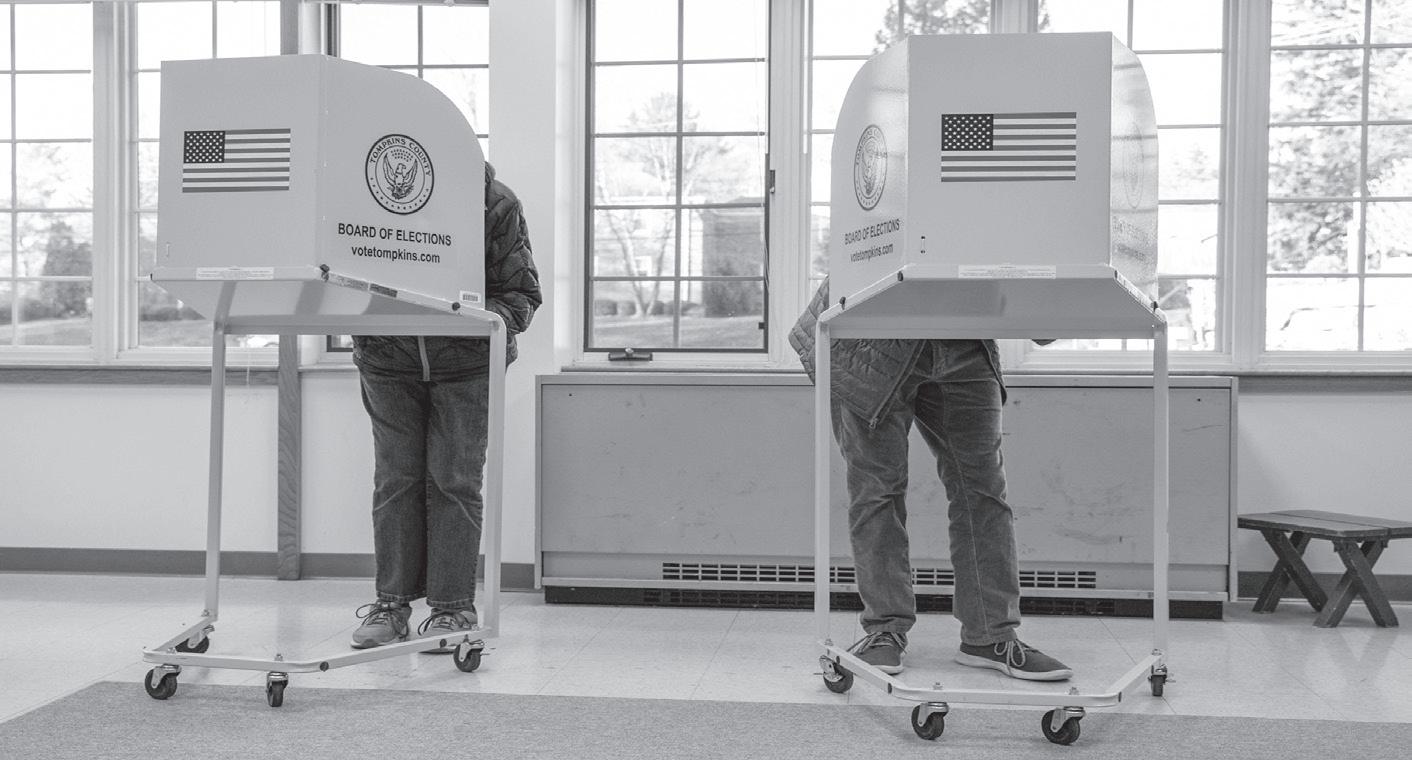
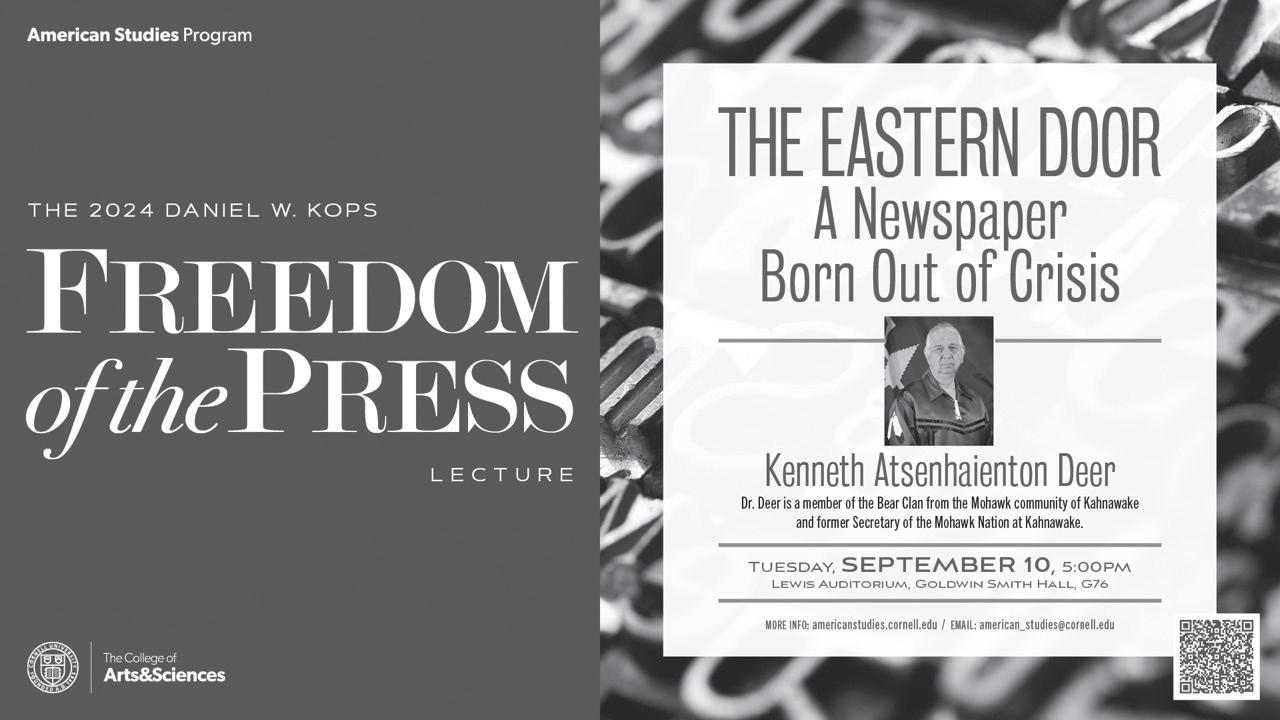
By BENJAMIN LEYNSE
Aug. 28 — Amid United Auto Workers Local 2300’s strike, which includes Cornell dining workers, students have been forced to navigate the first few days of school with significantly reduced dining options.
The University announced on Wednesday, Aug. 28 that — after two weeks of strikes and four months of bargaining — they had reached a tentative agreement with UAW. But UAW members will remain on strike until the new labor contract is ratified through a vote early next week. If the tentative agreement is approved, UAW members will return to work on Sept. 3, according to the University’s statement.
“Yesterday was almost a breaking point for me. ... I had a test to take. I had a ton of stuff, [and] all I was trying to do is take my food to go and eat real quickly.”
Will Posorske ’28
Until then, the University will be forced to continue improvising as it scrambles to feed its students. In place of normal dining operations, the University has resorted to a boxed lunch system in which students use a swipe to pick up a pre-made lunch from dining halls. For breakfast and dinner, a limited menu is available at select dining halls, where students can fill a take-out box and eat either there or at another cafeteria.
For first-year students, the significantly limited dining options are part of their first impression of Cornell.
A big draw for Jimmy Quinlan ’28 to attend Cornell was the quality of its dining — Cornell is consistently ranked in the top 10 for best campus food among all colleges in the country. But the strike has changed that perception.
“Obviously if you’re out here [at the dining halls], the food has not been what it normally is because of the strike,” Quinlan said. However, Quinlan was sympathetic to the underlying cause of the strike.
“Growing up in, like, not the highest income family of all time, I totally understand where they’re coming from. You know, I think the workers deserve fair treatment and all that.” Quinlan said.
But others have been frustrated by the food quality, long lines and limited hours. When Will Posorske ’28 attempted to get dinner at Morrison Dining Hall on Tuesday, he found that the dining hall was at capacity. As a result, he had to wait in another long line at North Star Dining only to have what he described as a “bad dinner.”
“Yesterday was almost a breaking point for me. It
was the most frustrating thing ever,” Posorske said. “I had a test to take. I had a ton of stuff, [and] all I was trying to do is take my food to go and eat real quickly. … And I get it, we’re privileged and lucky to be here, but it’s the strike, dude, it’s the strike,” Posorske said.
As a result of the lackluster on-campus dining options, some students have opted to go to Collegetown for their lunches during the day instead. For Lily Whaling ’28, this excursion takes her about an hour, which on some days is barely enough time for her to get back to class.
This influx of Collegetown customers has inconvenienced those without a meal plan who typically eat off-campus. Law student Michael Spivey grad regularly gets lunch in Collegetown, and said that while lunch typically takes just 15 minutes, he estimates that time is now closer to 30 minutes.
“You can definitely see the difference in the lines, [and] I think a large part of that is the strike,” Spivey said.
While the University’s tentative agreement with UAW has many optimistic that the strike may come to an end, Posorske is worried about how the outcome of the strike will affect his tuition.
“These workers are making well above minimum wage. Yeah, and the students that support it, I’m like, ‘Go you… great activism,’ but if [we] eventually come to an agreement, [it] is gonna jack the tuition prices up. … Tuition is already basically unaffordable for me. That’s why I’m in the army. I can’t afford to pay for full tuition at this school.”
UAW 2300 had been asking for a 25 percent wage increase. There has been no indication from University officials that tuition will rise as a result thus far.
“In a way, it’s a very small sacrifice to make a lot of people have livable wages, and I’m still eating, I’m still getting my calories in there.”
Jimmy Quinlan ’28
Quinlan, though disappointed by the food options, recognized that the strike is larger than the temporary inconveniences.
“In a way, it’s a very small sacrifice to make a lot of people have livable wages, and I’m still eating, I’m still getting my calories in there,” Quinlan said. “Maybe it’s food I wouldn’t have chosen, [but] that’s okay — there’s greater good than us and our dietary needs.”
Ming DeMers contributed reporting.
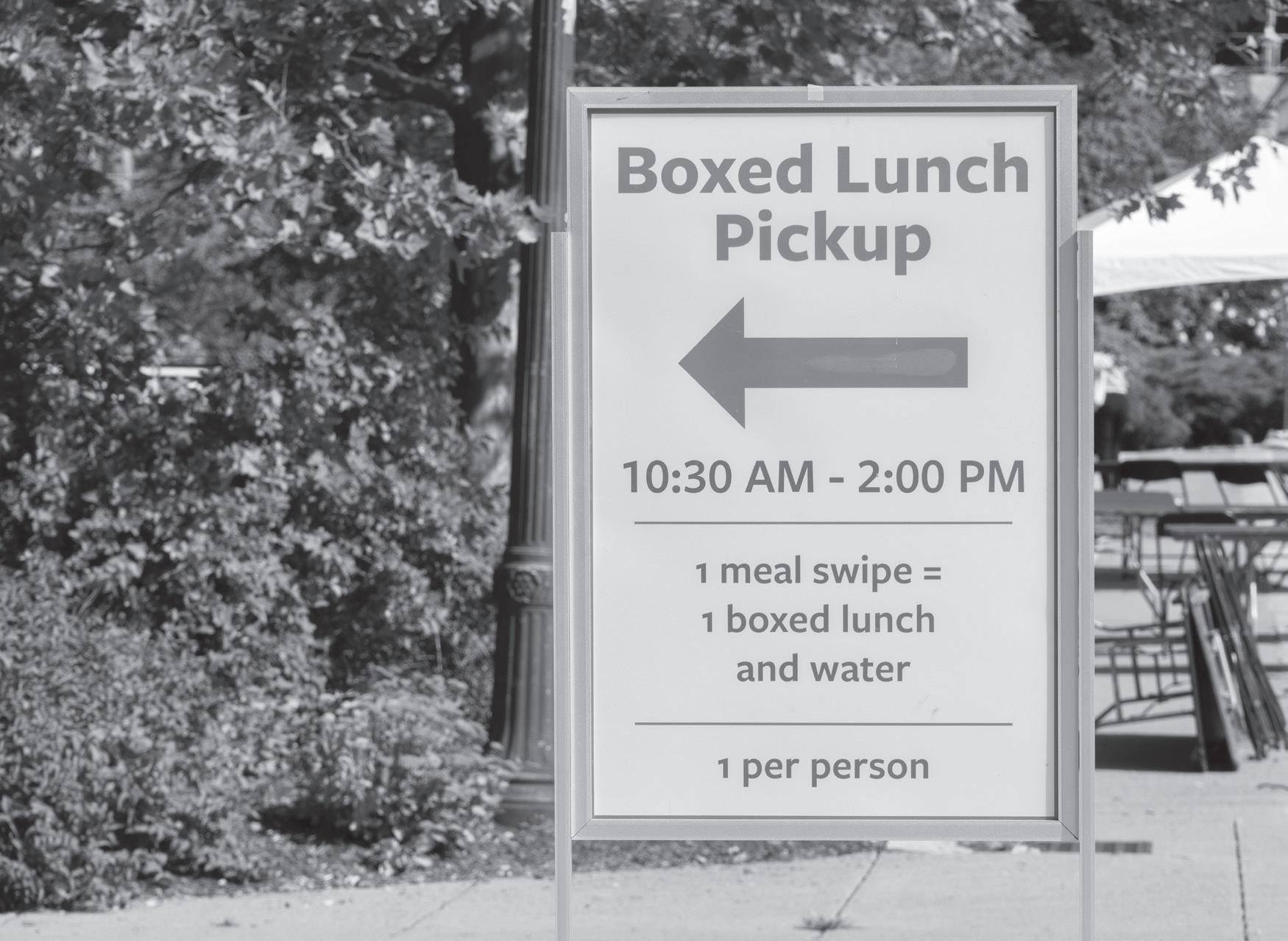

By OLIVIA HOLLOWAY Sun Senior Writer
Aug. 30 — South Campus residence hall Sheldon Court went out of hot water since early Monday, Aug. 26, following a boiler malfunction, leaving residents unable to shower at the dorm.
Building staff are currently waiting on a specialized part to arrive and were unable to provide a timeline for repairs in their most recent communication to students.
According to a statement from Cornell Housing and Residential Life, the office anticipates the issue to be resolved before the weekend.
Depending on what floor they live on, residents have been asked to shower at corresponding floors in Cascadilla Hall, a separate hall divided from Sheldon Court by the Schwartz Center for the Performing Arts and a parking garage. Residents received guidance and information about the outage early on the morning of Aug. 26 — the first day of classes of the academic year.
Residential staff also recommended the locker room showers at Noyes, a fitness center that is a 10 to 15-minute walk from the dormitory under maintenance.
The outage has lasted throughout the first week of classes for Cornell students, which, for Isabel Macedo ’26, adds unnecessary hassle to an already busy time.
“It’s already stressful enough to navigate the first week of classes, figuring out your schedule and getting into a new routine,” Macedo said. “To get home and know that a shower isn’t an easy option — unless I want to be in freezing cold water or have to walk to Cascadilla — it just feels like basic living amenities aren’t accessible, especially with the University’s food situation right now.”
The outage occurred amid a campus-wide strike by United Auto Workers Local 2300, who make up approximately 1,200 of Cornell’s food, maintenance and facility workers — a strike that has officially ended as of Sept. 3 following the agreement’s ratification.
As the University and UAW bargained over move-in week and the first few days of class-
es, students experienced a lack of food availability on campus and a decline in cleanliness in residence halls. It is unclear whether the hot water outage in Sheldon Court was extended due to the strike.
According to Abby Bates ’26, who lives in Sheldon Court, the outage is a nuisance during the first week of classes, especially when the alternative options are so far from where she lives.
“It’s really just an inconvenience,” Bates said. “Like I would not want to go to West [Campus] to shower — no thank you.”
Bates, who has friends who live in apartments in the area that she can rely on for hot water, has not made the trek to Cascadilla or Noyes.
“To get home and know that a shower isn’t an easy option, ... it just feels like basic living amenities aren’t accessible.”
Isabel Macedo ’26
Several Sheldon residents have passed on alternatives altogether, instead opting to brave the cold water.
Housing and Residential Life told The Sun that residents were promptly informed of the problem on Monday and that staff are quickly working to solve the outage.
“We anticipate the issue will be resolved before the weekend, pending the delivery of a specialized part,” the statement read. “We apologize for the inconvenience. Cornell staff are working diligently to restore service as quickly as possible.”
Hot water was restored to the dormitory on Tuesday, Sept. 3, according to an email update sent to residents from Cornell Housing and Residential Life. The message informed Sheldon Court residents that they should no longer be using the Cascadilla showers and thanked them for their patience through the week-long outage.
GABRIEL LEVIN ’26
Editor in Chief
MAX FATTAL ’25
Associate Editor
HENRY SCHECHTER ’26
Opinion Editor
MARIAN CABALLO ’26
Multimedia Editor
MING DEMERS ’25
Photography Editor
ERIC HAN ’26
Arts & Culture Editor
SYDNEY LEVINTON ’27
Arts & Culture Editor
JADE DUBUCHE ’27
Social Media Editor
JESSIE GUILLEN ’27
Graphics Editor
JOLIN LI ’27
Layout Editor
PARIS CHAKRAVARTY ’27
Layout Editor
LUCY CAO ’26
Assistant Photography Editor
DANIELA ROJAS ’25
Lifestyle Editor
KIRA WALTER ’26
Lifestyle Editor
JULIA SENZON ’26
Managing Editor
ERIC REILLY ’25
Assistant Managing Editor
MARISA CEFOLA ’26
News Editor
MATTHEW KIVIAT ’27
News Editor
CHRISTINA MacCORKLE ’26
News Editor
KATE SANDERS ’27
News Editor
JANE McNALLY ’26
Sports Editor
GABRIEL MUÑOZ ’26
City Editor
KAITLIN CHUNG ’26
Science Editor
LAINE HAVENS ’25
Science Editor
ANUSHKA SHOREWALA ’26
Assistant News Editor
DINA SHLUFMAN ’27
Assistant News Editor
NICOLE COLLINS ’25
Weather Editor
ALLISON HECHT ’26
Newsletter Editor
The Sun’s View
Last year, the Supreme Court ended race-conscious affirmative action in higher education — and on the same day that decision was released, Cornell in a statement pledged to keep diversity central to its mission, reaffirming its founding commitment to “any person … any study.” A University task force on equitable admissions practices went on to recommend a wide-ranging progressive policy agenda for a post-affirmative action Cornell. The proposals included enhancing financial aid, accepting more community college credits and partnering with organizations that support students from “economically under-resourced communities.”
One year on, though, it’s hard to know how much Cornell lived up to its promise of inclusion because the University has yet to release demographic data on the Class of 2028, the first class admitted post-affirmative action.
The latest enrollment statistics from other top colleges, including the Massachusetts Institute of Technology and Amherst, show a worrying trend of declining racial diversity. At both MIT and Amherst, enrollment of new Black, Hispanic and Native American or Pacific Islander students dropped by almost ten percent, while the percentages of white and Asian American students rose.
Elite college admissions programs are failing to put together classes that represent the brilliant diversity of America. Instead, they’re perpetuating systems of inequality that go against the purpose of modern liberal education, which is to expose learners to a plurality of perspectives.
Even if other institutions of higher education are falling short, Cornell has a responsibility to uphold its commitment to building diverse classes equipped to solve the diverse set of problems our generation is confronted with. That starts with transparency and taking a serious look at how students are admitted. The University must release the Class of 2028’s demographic data for all the campus community to see.
When our University was founded in 1865, it stood out for its vision of inclusion. The Sun’s question is: Are we still exceptional? If we are, we can serve as a crucial example of how admissions can look in a post-affirmative action world. If not, Cornell has allowed the Supreme Court to strip away its institutional identity in one decision. In either case, there’s no excuse to keep the data under wraps.
— The Editorial Board
Ayman Abou-Alfa is a sophomore in the College of Arts & Sciences. He can be reached at aga56@cornell.edu.
Research is the jewel in Cornell’s crown: as said in its mission statement, the University is committed “to discover, preserve, and disseminate knowledge.” The quality of the research produced contributes substantially to the University’s prestige and allows us to attract the most accomplished and distinguished faculty from across the world. Just as with other facets of university life, students at all levels are involved, whether it be graduate students formulating experiment protocols or undergraduates conducting large data analysis in R. This is a potent reflection of the University’s principles, as all are committed to participating in the pursuit of knowledge. Yet, an important inequality exists, particularly when it comes to the regulation of research at Cornell.
The Institutional Review Board, more colloquially known as the IRB, is the committee that protects the welfare of human subjects in scientific research and trials. Regrettably, the history of science is ripe with the abhorrent violations of human rights, necessitating such reviewers to validate trials. All protocols involving humans must be approved by the IRB before their implementation, ensuring the preservation of ethics and morality within the research process at Cornell. The existence of the IRB dates back to 1953, when the National Institutes of Health created a board for the review of human involvement in its clinical research projects. Ultimately, this policy was expanded to numerous other institutions in 1974, following the Tuskegee Incident, prompting the creation of Cornell’s own IRB. Thus, the IRB is one of the University’s most important mechanisms for the oversight of ethical science.
Yet, despite the involvement of undergraduates in Cornell’s research initiatives, there is no representation of undergraduates in the systems that dictate whether research may be conducted or not. Strangely enough, this lack of student representation is not the case for other Cornell institutions and programs: Teaching Assistant programs, for example, involve undergraduates, which is paralleled through student participation on the Educational Policy Committee. Given the numerous other examples of student government at Cornell, one would expect that undergraduates are equally involved in Cornell’s research regulatory process. Unfortunately, this is not the case. Compared to the one undergraduate and graduate student sitting on the Educational Policy Committee, none sit on the University’s IRB.
Some may suggest that although undergraduates may be a backbone in terms of the more menial aspects
of science, the intellectual heavy lifting is often done by the faculty; the latter earn precedence in deciding what counts as moral science, as undergraduates lack the pertinent qualifications to participate. Yet, even though inherently valid, this argument fails to understand the true purpose of systems such as the IRB. First, we must question whether intellectual ammunition should ultimately stand in for correctness; I would argue no. Simply being a good scientist does not preclude someone from unethical conduct — hence the need for an IRB in the first place.
Second, it can also be interpreted that faculty better understand the research at hand than any undergraduate, allowing them to evaluate projects with a higher degree of nuance. However, this fails to recognize one the key tenets of the committee, that being the marked contrast in the beliefs of its members. Within the scientific community, the definitions of ethicality and morality fall onto a committee that should represent a range of opinions and ideas. The IRB delineates a clear, face neutral definition of “right,” allowing for the particularities of different research proposals to be evaluated rationally. Such a sweeping mandate necessitates a diversity of roles and stakeholders in implementation, rather than a sole reliance on the top echelons of Cornell’s research community. Currently, many members of the IRB are not faculty, but rather managers and administrators at Cornell.
Preserving this diversity of roles and positions within the IRB is essential, as it reintroduces a more human perspective into what may be a very research-oriented opinion. Those less familiar with the particularities of certain research proposals are often better suited at truly distancing themselves from the science, not allowing the bias of pursuing certain results to influence their perspective on whether or not a study should be conducted. Thus, when the opinion of a key stakeholder — those attending an academic institution — is missing, it should immediately be questioned. Students are deserving of their place on Cornell’s IRB, not only as young researchers, but as members of the school’s community.
Alongside the development of science, the development of the practice of science must also be innovated upon. It is in this light that Cornell has the opportunity to take an important step in the right direction, being among the first prominent research institutions to include students in the regulation of its publishing and research.
Sophie Gross is a sophomore Comparative Literature major in the College of Arts and Sciences. Her work is often featured in the Arts and Culture sectin of the Cornell Daily Sun. She can be reached at sgross@cornellsun.com.
When I ask most of my friends what they dislike about the structure of the academics of Cornell, the answer I hear most frequently are the distribution requirements — more specifically, the language requirement in Arts and Sciences. When prodded further, they say that the classes are hard [true], too time consuming and boring. Well, I could say the same about math or computer science, I reply. It is at this point in the discussion that they bring up what is useful. I get it now. It is not that a language class is too hard, too much work or mind numbingly boring in ways that STEM classes somehow aren’t, but that in their eyes, the class is simply not worth the effort.
As a sophomore, I’ve finally met enough people to start sensing a trend in the mindset of many [if not most] students here. A degree or major is usually chosen based on how much money it will help someone make in the future. Students elect classes that are not required for their major based upon how easy they will be able to earn an A, as high GPAs are often preferred in graduate school admission, in particular law, medical and other professional schools.
A degree or major is usually chosen based on how much money it will help someone make in the future.
And so, where does learning a language fall into this formula? It is not an entry requirement for most graduate schools, and as they are notoriously hard, they are not GPA boosters. Though being multilingual is a hard skill, most students end their language learning once they finish the requirement, which is often before fluency. Even those who end up briefly fluent later forget with the learning left unattended. Thus, a language requirement is “useless” in this narrow-minded formatting. It is in fact so despised that I know multiple people who are trying to transfer out of Arts and Sciences for the sole purpose of avoiding it.
I’m a Comparative Literature major — call me biased. But, I spend a large portion of my time learning foreign languages, and I would like to argue that the language requirement should not be abolished or reduced, but the contrary. I think that every undergraduate should be required to learn a language. Cornell, along with many
other universities across the nation and their students, seem to have lost the spirit of a liberal arts education. It is imperative for students to achieve breadth across the disciplines of the humanities and sciences, with the intent of creating citizens capable of critical thought. That is why the distributions in Arts and Sciences exist, and core curriculums in other schools. Students that I encounter are hyper focused on their future career goals and cannot see the value in learning things that are not directly tied to getting ahead. Although I believe it sad that the value of learning for the sake of curiosity has been lost, I understand that students have most likely acquired this mindset from parental pressure, a low income background with the incentive to get out of debt and from a capitalist system which dictates value solely through one’s ability to work and maximize profits for themselves and their employers. But just because students are not to blame in avoiding a liberal arts education doesn’t detract from the argument. Ultimately we’ll still go on to achieve what we want with our Cornell degrees: They do not change whether or not we took a language and a couple literature classes. No one — least of all Cornell — wants to take away from earning potential. However, more than just the innate value, I believe the “trade school” mode of thinking to be wrong. There is an inescapable value of a liberal arts education in every career sector.
It is known, for example, that historically, English and other Humanities majors outperform most STEM majors on the MCAT, the standardized exam required for admission to most medical schools. How can marketers be truly successful if they do not have an understanding of the cultural and historical context of their target audience? We dramatically underrate soft skills, specifically those gained in the humanities: the ability to think critically about a piece of text, basic analytical abilities, logical reasoning, rhetorical talent and cultural understanding. We’ve seen what happens when those skills are lost — we’re living it. The common ground on which we stand as a society is crumbling beneath us, and our only way back to reason is to teach it to students, to give them all of the skills they need to be contributing members, and not just the ones they think they need.
Sophie Dasser is a freshman Computer Science and Philosophy major in the College of Arts and Sciences. She can be reached at sd2229@cornell.edu.
The rise in public consciousness of the Israel-Palestine conflict has taught me that sharing thoughts — any thoughts — on this topic inevitably produces disruption. In that light, one might argue that many students are afraid of making waves; I think the truth is more unsettling: many just don’t care. This apathy, particularly towards the suffering of marginalized groups (in this case Palestinians), is deeply troubling. To some extent, the willingness to dehumanize such communities is worsened by the graphic imagery flooding social media, which effectively desensitizes us to the real life human suffering. But this indifference isn’t just a product of modern media; it’s rooted in how we are taught to view the world from a young age.
From the earliest stages of education, we are encouraged to relate to characters in the media we consume — how are we similar; how are we different? This seemingly innocent exercise in comparison subtly teaches us to prioritize empathy to those who resemble us. Research supports this, showing that people are more likely to feel empathy for individuals who share their racial or ethnic background. In a social psychology study participants exhibited more empathetic responses to pain when the subject was of the same race. This isn’t just about race, though; it’s about a broader tendency to care more when we can see ourselves in the other person’s shoes.
Even during the #MeToo movement, one of the most prevalent arguments was to imagine that the victim could be your mother, sister or daughter. While this tactic undoubtedly raised awareness and empathy, it also highlighted a disturbing reality: We often need to imagine a personal connection to care. This approach, while effective, underscores a troubling aspect of our empathy — it’s conditional.
This loss of empathy is a clear result of the gaps in our educational system, particularly within our English classes. English literature, from an early age, has the potential to be a powerful tool in building empathy. When done right, it exposes students to diverse perspectives, cultures and experiences, helping them to understand and appreciate lives different from their own. However, when the curriculum is narrow and focused only on familiar narratives (especially those that surround European history and literature), it reinforces the idea that we should only care about those who are like us and lures us into a dangerous mindset of continuing to see ourselves in the same type of person time and time again.
At Cornell, there is an opportunity to address this empathy gap
in meaningful ways. The University can take several steps to ensure that students not only excel academically but also develop into compassionate, socially conscious individuals. One approach is to diversify the literature, and perspectives presented in required courses, particularly those in the humanities. Freshman Writing Seminars are the only classes that are required across majors; by creating a requirement to integrate diverse texts from diverse backgrounds in all of the classes we can work to enrich our otherwise dull understanding of the world around us.
“[The] loss of empathy is a clear result of the gaps in our educational system, particularly within our English classes.”
Another solution can be found in encouraging more open dialogue about global issues, including the Israel-Palestine conflict. Creating safe spaces for discussion, where students can express their views and listen to others, can help break down the apathy that often stems from ignorance or discomfort. For example, Dartmouth College has implemented guest lectures and workshops that address difficult global issues and encourage meaningful conversations among students. Cornell could adopt similar initiatives, facilitating workshops, guest lectures and panel discussions that focus on building understanding and empathy, rather than avoiding controversial topics out of fear or indifference.
Additionally, the University can play a role in promoting service-learning opportunities that connect students with communities different from their own. Meeting the Einhorn Center for Community Engagement during orientation week, I recalled the importance of engaging in direct service or partnerships with local and global organizations. Working side by side towards the same cause with those who do not look like you, speak like you or even think like you plays a large role in creating empathy for others.
The reality is that our education system has long emphasized intellect over empathy, leading to a generation of students who may excel academically but are disconnected from the world around them. By addressing the gaps in our English curriculum and promoting a culture of empathy at Cornell, we can begin to reverse this trend. It’s time we recognized that relatability has never been a fundamental part of our humanity, but caring has.
By LAINE HAVENS Sun Science Editor
Ithacans can now enjoy a drink alongside space science education thanks to the efforts of five graduate students in Cornell’s astronomy department.
The students are spearheading an “Astronomy on Tap” chapter in Ithaca, branching from an international public event series where attendees can socialize and learn about space sciences while enjoying beverages at local establishments.
Astronomy on Tap Ithaca will occur at 7 p.m. on the second Thursday of each month at Liquid State Brewing Company, with the first event slated for Thursday, Sept. 12.
Each Astronomy on Tap session will last about an hour, with enough time for two speakers to shed light on their expertise, audience members to ask questions and drinkers to ask for a refill. Presentations will cover a range of space-related topics, from cosmology to engineering, geology and biology.
“[Astronomy on Tap] is supposed to be a fun, light-hearted and informal event, which is a very stark contrast to the typical, stereotypical, kind of stuffy, maybe boring, science conversations that people assume science talks are,” said Alexia Kubas grad, an Astronomy on Tap Ithaca organizer.
With an atmosphere more casual than typical colloquiums, Astronomy on Tap Ithaca hopes to reach members of the public who do not normally engage with astronomy.
“I think we all noticed that there was kind of a lack in our department in terms of giving science talks geared towards the public and

sharing [our research] with our community,” Kubas said.
“I think that [Astronomy on Tap Ithaca] is really going to fill a need and hopefully be a really good community building exercise.”
According to Kubas, the Department of Astronomy conducts outreach aimed at elementary and high school students, undergraduates and even senior citizens, but there remains a distinct gap in reaching young and middle-aged adults.
“That’s why I think Astronomy on Tap is important. It’s in the name — it’s at a brew-
ery, which is where the 20 and 30 and 40-somethings hang out,” Kubas said. “It’s the missing demographic certainly in the types of outreach events that we do at Cornell.”
Although Cornell graduate students organized Astronomy on Tap Ithaca, the monthly events are not restricted to Cornellians. According to Kubas, the organizers want the events to reach the greater Ithaca community and surrounding areas.
“My hope is that people from the local community, not just students, not just peo-
ple already having that interest [in astronomy], find these events to be really fun,” said Diana Solano-Oropeza grad, an Astronomy on Tap Ithaca organizer. “Informal science communication, like Astronomy on Tap, helps a lot in educating the public on a lot of science topics that you might not get a chance to read about in [school].”
Charlie Detelich grad, an Astronomy on Tap Ithaca organizer, will speak at the first event. For Detelich, Astronomy on Tap is an opportunity to share enthusiasm about astronomy.
“This is a career and a passion that I’m really, really excited about and [that] I love,” Detelich said. “I want to do everything in my power to give other people that same excitement about astronomy that I feel.”
After deciding to start an Ithaca Chapter of Astronomy on Tap, Kubas sent a quick email to all astronomy graduate students and was quickly joined by Detelich, SolanoOropeza, Veronica Hegelein grad and Yongqi Zhang grad.
Because of the breadth of space-related fields, Astronomy on Tap Ithaca lectures will likely encompass not only the study of stars, planets and galaxies but also geology, biology, engineering, data science, instrumentation and chemistry. Speakers will design their talks to be accessible to untrained audiences.
“I think Astronomy on Tap is really great because anybody is welcome to come to these talks and learn something super cool,” Detelich said. “You don’t have to have any background in astronomy to understand what we’re going to be talking about.”
Laine Havens can be reached at lhavens@cornellsun.com.
By ANNA HOOPER Sun Contributor
When Mal Martin was first diagnosed with Type 2 diabetes, he could not help but notice his doctor’s coldness and the lack of guidance for his recent diagnosis.
“My doctor called me and said ‘You have diabetes. Your blood sugar is 494 mg/dL.’ I didn’t know what that meant. I had nothing to base it on,” Martin said. “The next thing she said to me was ‘I’ve called your prescriptions into the pharmacy.’”
Martin is one of 37 million Americans with Type 2 diabetes — a chronic disease where the body has difficulty utilizing insulin, a hormone that turns glucose in the blood into usable energy. The disease can be managed through dieting, exercise, weight loss and/or insulin therapy.
According to the New York State Department of Health, 6.2 percent of the population in Tompkins County has diabetes, a number lower than all other counties in New York state. However, Tompkins County has an uneven distribution of Type 2 diabetes, disproportionately impacting marginalized communities within the county.
Individuals with Type 2 diabetes, like Martin, experience trying levels of misrepresentation, assumptions and stigmatization surrounding their diabetes. According to research published
in the National Library of Medicine, 76 percent of Type 1 diabetics and the majority of Type 2 diabetics reported experiencing stigma after their diagnoses.
“There is a misconception that excess body weight is the de facto cause of Type 2 diabetes, which can lead to prejudice and discrimination against heavier people,” said Dr. Reilly Coch, the Medical Director for Cayuga Diabetes and Endocrinology.
Type 2 diabetics often encounter narratives that frame them as weak, incapable, lazy or at fault for their diabetes. Martin’s diagnosis was 18 years ago. Since then, he has endured the difficulties of accessing proper guidance for managing his blood sugars, the fluctuations of the disease itself and a slew of stigma.
“One of the things people would often say to me is ‘Oh my God, you’re eating ice cream. You’re diabetic. You’re going to die.’ No, I’m not going to die. I just have to be careful,” Martin said.
For Martin, the stigma carried into healthcare. As he recalled his last doctor’s visit, Martin felt that his doctor was making false assumptions.
“She had looked at me and thought, ‘Well, here’s a big guy. He’s got to eat ice cream all the time. He’s got to eat cake all the time. He doesn’t eat healthy, and that’s why he’s a diabetic.’”
An inactive lifestyle, a lack of healthy
food intake and being overweight are factors that typically increase one’s risk for Type 2 diabetes. However, socioeconomic factors complicate one’s health. People of color and low-income individuals who live in areas with less access to fresh, healthy foods are also at a higher risk. Genetics also plays a role. Martin, for example, comes from a line of Type 2 diabetics.
“Genetics plays a big part of it. My grandmother was one of nine children and all nine of them had diabetes. My mom was one of four children, and three of them had diabetes,” Martin said. “Part of it is out of our control.”
The view of Type 2 diabetes as a personal moral failing can prove especially harmful given the difficulties many individuals face in leading healthy lives. Factors like race, age, socioeconomic status and location are large indicators of Type 2 diabetes in Tompkins County. This stigma can produce internalized shame, stress and failure to fully access treatment and accommodations for diabetics.
“One of our biggest concerns is access to fresh, healthy foods,” said Gunnar Madison, Senior Program Director at the YMCA of Ithaca and Tompkins County. “We have a lot of people who are struggling to get by because of the high cost of living here in Tompkins County.”
Nutrition-related diseases, associated with Type 2 diabetes, are particu-
larly common in low-income residents, older populations and the African American community. Black residents of Tompkins County are two times more likely to develop Type 2 diabetes than white residents.
Transportation challenges also often exacerbate food insecurities. The Tompkins County Health Department reported that residents of Caroline, Enfield, Groton, the outskirts of Newfield, Dryden and Candor often experience difficulty in accessing fresh, healthy and non-processed food.
“If you live out in some of the rural parts of our county, like in Danby and Newfield, transportation can be an issue. You might have the bus come once or twice a day, and that’s it,” Madison said. “Getting people to the grocery stores could be an issue because not all of our communities have grocery stores.”
Low-income individuals may not have the time to exercise and prepare healthy meals as well.
“A healthy lifestyle is strongly correlated with income,” Coch said. “Food preparation, preservation and distribution are expensive and time-consuming. The recommended amount of exercise for people with Type 2 diabetes is 300 minutes per week, which can significantly reduce the income potential of the people who need it.”
Madison also identified parenthood as another potential barrier to leading
an active life. Without childcare, it can be difficult to find the time to work out.
According to Madison, the Ithaca YMCA used to run a Diabetes Prevention Program, which was discontinued in 2015 due to the lower rate of Type 2 diabetes in Tompkins County relative to other areas.
Tompkins County Whole Health ran a similar program, which was also discontinued due to staff changes and a decrease in enrollment. Currently, Cayuga Health runs a National Diabetes Prevention Program which aims to create behavioral change in its participants with an emphasis on healthy eating and increasing physical activity.
For many Type 2 diabetics, like Martin, these programs can help increase access to healthy lifestyles and provide education around Type 2 management, but he says that more is needed. High levels of stigma around Type 2 diabetes, which characterize it as a moral failing, often prevent individuals from fully accessing accommodations or treatment.
“Hopefully, we can try to break the stigma of the disease,” Martin said. “[We need to] get people to understand that a lot is happening, and there’s a lot that’s contributing to it.”
Anna Hooper can be reached at ajh323@cornell.edu.
Kaitlyn’s Lifestyle Guest Outlooks
Kaitlyn Bell (she/her) is a Lifestyle Guest Columnist and first-year student in the ILR School. She can be reached at kgb57@cornell.edu.
If you’ve ever been to summer camp, you haven’t — at least not until you have experienced orientation week at Cornell. Orientation week, commonly known as “O-Week” is the week before classes begin at Cornell University, something almost unique to the school. Students are expected to move in seven days before classes begin and spend the week walking record miles and doing the same events repeatedly. This for some, was a great time to explore campus, meet many people, and adapt to college life, but for others, school started with a head cold and extreme exhaustion. The perspective could be seen either way but, both can be true for one person. Regardless it’s fair to say, o-week could be shortened, and the events could be compacted into a shorter amount of time to prevent some redundancy.
Some freshmen share the sentiment that there was too much time in the day and too many random activities to do. With a full schedule of orientation events and thousands of other freshmen to meet, allocating time to do everything is overbearing.
Jared Miller ’28 expressed concern over the amount of time allotted in the day and the week overall. “There
was a lot of time. I always felt like there was something I should be doing but I didn’t know what.”
With every student having the ability to personalize their orientation schedules for the week this looming concern was commonly shared. It is a very real possibility that you could be a 30 minute walk away from your roommate attending a Club Fest while they are on a tour of the Botanical Gardens. The options are diverse and good experiences but are very oddly widespread.
Many universities leave students with about three to four days of move-in time to settle into their surroundings, rather than stacking event after event. This repetition can also feel like time is being taken away from important experiences before classes. Avery Morris ’28 shared her feelings more in depth regarding the events and what she took away from some. “To me, a lot of the orientation activities seemed really repetitive. I got told about the Good Samaritan law [about] 50 times.”
The repetition of on-campus information is important so freshmen know everything required of them but drilling it into students’ brains right before classes begin becomes tiring.
As classes begin, more useful information will come about in a more fluid way that isn’t draining to memorize. For example, instead of being told to fear academic probation time after time once classes begin, the challenge of the course load will motivate me, and I am sure many others, to stay on top of class assignments and readings.
The transition from orientation to the first day of classes is also an uncomfortable adjustment. Going from spending time in the dining halls, speaking to new people and watching people play spikeball or volleyball to seeing every student with a heavy backpack with a nervous glance was quite overwhelming. However, having the time and opportunity to attend college-specific events, go to the Ithaca Farmers Market and swim in Ithaca’s water holes is something I will never forget. With a reduced orientation schedule I do believe I would have explored these activities to their fullest potential before classes began and Ithaca gets cold.
O-week is a term that will forever be ingrained into my memory and remembered for its 48-hour days and exciting new memories, but summer camp will never ever be the same.

Caitlyn’s Lifestyle Guest Icks
Caitlin Gallagher is a third-year student in the ILR school. She can be reached at cmg323@cornell.edu.
Even though it may be true that dating apps have made life more difficult for those looking for a partner on campus, the rise of “The Ick” suggests we have brought this problem upon ourselves. This became clearer to me when I spoke to a male friend of mine about the impact the term has had on his dating experience. He said that even though he also thought the online joke was funny at first, it was jarring to have a girl tell him that he had given her “The Ick.” His conduct was not even egregiously offensive - he received this criticism for not speaking loud enough to the waiter when he asked for the check. Although his date meant it as a light jab, it made me consider when it became acceptable for a date to essentially tell you when they were disgusted by you.
If you frequent TikTok or Instagram, you might already have a grasp on what the term means. People on TikTok have taken to the term and now post extensive lists of the objectively ridiculous things that have given them “The Ick.” The lists often continue in the comments as these TikTok creators urge people to name their “icks” to boost engagement. As if dating was not hard enough, TikTok and Instagram have now become an open forum for people to name their disgust of potential partners.
“The Ick” was actually coined in the 1990s on an episode of sitcom Ally McBeal and was even the namesake of an episode of Sex and the City. The term was introduced to our generation by Olivia Attwood on reality show Love Island. More than anything, “The Ick” seems to be a specific physical reaction to anything a potential suitor does that turns you off. When someone says they have “The Ick,” it means they are expressing a general sense of discomfort and unease at something a romantic partner has done.
In some ways, it is relieving to finally have the language to describe the skin-crawling, nauseous feeling you get when a suitor is rude to the waiter or chews with their mouth open on a date, but, what constitutes an “Ick” has been taken too far. I have heard everything; the type of socks a man wears, the way he chases a rogue ping-pong ball, being lactose-intolerant, drinking milk, chasing after the TCAT and dancing at Hideaway is the non-exhaustive list. What began as a way to describe objectively rude behavior
and poke light fun at people you are interested in has become an umbrella term that allows relentless nitpicking of your partner’s behavior. At a point when college-dating seems more grim than ever, perhaps a return to old-fashioned kindness and endearment is where we should focus our energy instead.
In order to understand the dangers of the term, it is also important to reckon with the dating landscape on campus. We live in an era dominated by dating apps like Tinder and Hinge, which have given college-aged people hundreds of potential admirers to scroll through at their leisure. Dating apps are so prevalent in our lives on campus that I have even attended parties that were sponsored by dating app companies. Dating apps are exciting, there is nothing quite like the dopamine rush of matching with someone you found attractive, but the general consensus among my peers is that they are addictive and create too much distance between them and potential partners. In my experience, this sentiment is shared across gender and sexuality. With these new challenges, finding even just a casual partner seems more impossible than it was even just a few years ago. Given this new norm, it is no wonder people feel so despondent about the college dating scene. For people of all genders looking to put themselves out there, there is now an impossible maze of “Icks” to navigate in order to woo a new lover. It would be one thing if the concept of “Icks” was a widespread push for more respect or thoughtfulness, but it seems that it has only encouraged everyone in the college dating pool to abandon basic authenticity and common decency. This may seem extreme, but think about how before a few years ago, “Icks” like the ones I have described would never have influenced a relationship. I would venture to say that healthy and fun relationships are never born from nitpicking or criticism, which is what this chronically online phenomenon encourages. If we wish to maintain any ounce of hope about college dating, it is time to reconsider our use of the term. The next time you see someone run after a ping-pong ball in a frat basement, instead of turning to your friend and immediately explaining “The Ick,” use it as an opportunity to reevaluate what “The Ick” really means.
BY KIRA WALTER AND DANIELA ROJAS Sun Lifestyle Editors
With a new contract ratified between Cornell and the UAW, on-campus eateries are bouncing back. Once indefinitely closed, popular cafes are predicted to open doors throughout the week, promising the return of staple lunches and much-missed caffeinated beverages after Wednesday, September 4. Box meals will become hot food buffets as dining halls once again become a between-lecture oasis. Since multiple dining units started
serving yesterday, the attitude about normalizing food options has been generally optimistic. Despite the apparent revival, Cornell Dining is still in a transitional phase. Many locations are offering limited menus as they adjust to being back in business. The University is advising students without meal plans to explore dining alternatives off-campus. Meanwhile, sudden food trucks are popping up on different quads to alleviate concerns about limited options. Sun Lifestyle Editors have two recommendations for this week: maximizing City Bucks and visiting free food trucks on campus.
Within the past week, students with a dining plan (14 meal swipes per week or more) received $50 in City Bucks, which is dining money that can be used off-campus at certain restaurants. From 7-11 to Greenstar, many college town and downtown businesses take city bucks as payment. Ithaca To Go has also begun accepting this Cornell currency so students can order directly to their dorms from dozens of Ithaca restaurants. For students without a meal plan, in the latest email sent out to the Cornell community from Cornell Leadership regarding the ratification of the UAW contract, members of the Cornell commu-
nity can receive free meals from various food trucks around campus on September 3 and September 4. The trucks will operate from 11 a.m. to 3 p.m. Luna’s Street Food will run in J Parking Lot, near the Big Red Barn, while Jamaican Cuisine serves at Tower Road North Lot near Alumni Fields. DotCU Cuban Food awaits students on Campus Road near Teagle, and Scooter’s BBQ can be conveniently found in the Morrison Parking Lot. Kira Walter and Daniela Rojas are Lifestyle Editors for the Cornell Daily Sun. They can be reached at style@cornell.edu.
By TAEHEE OH Sun Staff Writer
Sept. 3 — The Equal Protection Project — founded and led by Prof. William Jacobson, law — filed a Civil Rights Complaint against the Ithaca City School District on Aug. 12, accusing the district of racially discriminating against white students by excluding them from the Students of Color United Summit 2024.
Following EPP’s complaint and a letter to the ICSD Superintendent Luvelle Brown and Board of Education President Sean Eversley Bradwell, both received racist and threatening messages, according to The Ithaca Voice. Less than 48 hours later, the ICSD emailed parents and students, apologizing for the use of “exclusionary language,” and opening up the event to all students, Fox News reported.
Since its founding in February 2023, The EPP has filed over 30 Civil Rights Complaints against education institutions with the U.S. Department of Education’s Office for Civil Rights.
Most of these complaints are against race-based scholarships, challenging the legality of the identity-based grants and fellowships in institutions including Ithaca College, Indiana University and the Massachusetts Institute of Technology.
Jacobson is long known for his conservative-leaning views on his blog, Legal Insurrection. He has been an outspoken critic of Critical Race Theory, a framework based on the premise that race is a social construct and racism is embedded in legal institutions. In February, Jacobson launched CriticalRace.org, a database that provides information to parents and students about the critical race training and anti-racism initiatives seen at colleges in the U.S.
The EPP is the third project of the Legal Insurrection Foundation, a media organization started by Jacobson, following Legal Insurrection and CriticalRace.org.
Jacobson declined an interview with The Sun, instead opting to send written responses to questions.
According to Jacobson, the EPP was launched to counter what he called the “group-identity ideology” in universities, which he described through examples such as “critical race theory; intersectionality; ‘anti-racism’ and diversity, equity and inclusion.” Jacobson argued that this “group-identity ideology” compromises individual rights and dignity in favor of group identities.
“Unfortunately, the prevailing ideology on many campuses, including Cornell, in practice rejects treating students as individuals, instead treating them as proxies for identity groups,” Jacobson wrote to The Sun.
Jacobson explained that the EPP aims to challenge this “ide-
ology” by using legal mechanisms to ensure each individual is treated equally without regard to race or ethnicity.
Jacobson emphasized the importance of people being “treated fairly and equally without regard to race or ethnicity,” which he claimed is established by the Equal Protection Clause of the 14th Amendment, the Civil Rights Act of 1964 and in the internal rules governing colleges and universities, including Cornell.
“We fight against [the group-identity ideology] by filing legal challenges that seek to hold institutions to the requirements of the law and their own set of rules,” Jacobson wrote.
Prof. Nelson Tebbe, law, a constitutional law expert, explained that the larger debate around race-based programs and affirmative action in universities centers around the two legal interpretations of the Equal Protection Clause: classification-based and anti-subordination.
“[The classification-based interpretation] is [that] any classification on the basis of race, draws a presumption of unconstitutionality,” Tebbe said. “But [in the anti-subordination interpretation,] the purpose of the equal protection clause is not to prevent classifications or to promote a colorblind sort of view of government policy, but instead to combat structural inequality on the basis of race that’s historically rooted.”
In recent years, the Supreme Court has shifted away from the race-conscious anti-subordination approach and towards classification-based interpretation — widely recognized as “anti-classification.”
Jacobson — whose thinking largely aligns with the classification-based interpretation — believes there is no structural inequality on the basis of race that warrants race-based scholarships.
“There are no systematic barriers to affordability of higher education based on skin color or ethnicity,” Jacobson wrote.
Jacobson argued that instead of promoting racial diversity, universities should seek to promote diversity of opinions and experience.
“You can achieve diversity [of viewpoint and experience] without regard to skin color or ethnicity,” Jacobson wrote.
The majority of EPP’s complaints followed the Supreme Court’s striking down race-based affirmative action in college admissions on June 29, 2023 in its Students for Fair Admissions, INC. v. President and Fellows of Harvard College ruling, citing its violation of the Equal Protection Clause of the 14th Amendment.
Prior to its ruling on affirmative action, the Supreme Court allowed for racial classifications within some specific contexts.
“Schools, especially universities, could, through their affirmative action programs, promote diversity as an educational
Continued from page 4
How do I register to vote in Tompkins County if I’m an eligible voter from out of state or without a New York State ID?
All eligible voters, including those without New York State identification, can register to vote in New York by filling out a voter registration form and sending it to the Tompkins County Board of Elections. Registration forms must be received by the Board of Elections by Oct. 26.
What if I want to vote at home (outside Tompkins County) instead?
For information about voter registration in all states, visit vote.gov.
Students anticipating to vote with an absentee ballot should be aware that many
states — including New York State — require absentee voters to apply either online or by mail before receiving an absentee ballot. For more information about your state’s policies, visit your state’s board of elections. Students must be registered to vote before applying for an absentee ballot.
In New York State, the deadline for applying for an absentee ballot is Oct. 26 and ballots must be postmarked by Nov. 5.
If you are concerned about your voter registration, believe that your ability to vote has been hampered or believe that your rights as a voter have been violated in any way, civil rights organizations such as the American Civil Liberties Union may help with legal challenges.
Kate Sanders can be reached at ksanders@cornellsun.com.

benefit, and that was deemed by the Supreme Court, for many years, to be a good enough reason to overcome the suspicion of race-based classifications,” Tebbe said. “Now that affirmative action itself is much harder to justify, I would say these programs that have similar kinds of structures [such as race-based scholarships] would also be harder to justify.”
Educational institutions challenged by EPP found it difficult to justify their identity-based scholarships and programs.
After EPP’s complaint, Ithaca College changed the criteria of Rashad G. Richardson “I Can Achieve” Memorial Scholarship and The African Latino Society Memorial Scholarship from “students of color at Ithaca College” to “students who exemplify leadership in programs with the BIPOC Unity Center or other programs across campus.”
“In over half of our challenges, the institutions have modified or eliminated their race and ethnicity-based eligibility requirements soon after receiving our complaint,” Jacobson wrote.
In the face of increasing challenges to race-based scholarships in universities, an ongoing debate on other ways to preserve diversity in educational settings continues.
Tebbe said that the explicit wording of the scholarship programs will play a crucial role in determining whether they face legal challenges.
“If the scholarship program is structured [to say] ‘The point of this is to enable people of all kinds of backgrounds to attend Indiana University, and we’re going to use it to diversify the school across a range of axes, not just race, but also gender, sexual orientation, wealth and geography,’ then I think the programs are much more likely to be upheld or at least not subject to strict scrutiny, because they wouldn’t be in the obvious or facial way racial classification,” Tebbe said.
Richard Kahlenberg, the director of housing policy and director of the American Identity Project at the Progressive Policy Institute, argued for economic class-based affirmative action and scholarships in higher education.
“I think it’s very likely that race-based scholarships won’t survive legally, and therefore universities have to think about ways to tweak their scholarship programs to achieve the important goal of economic and racial diversity,” Kahlenberg said. “In America, Black and Hispanic students are disproportionately coming from low-income backgrounds. So shifting from a racebased to an economic needs-based scholarship makes sense, in my view.”
Taehee Oh can be reached at toh@cornellsun.com.
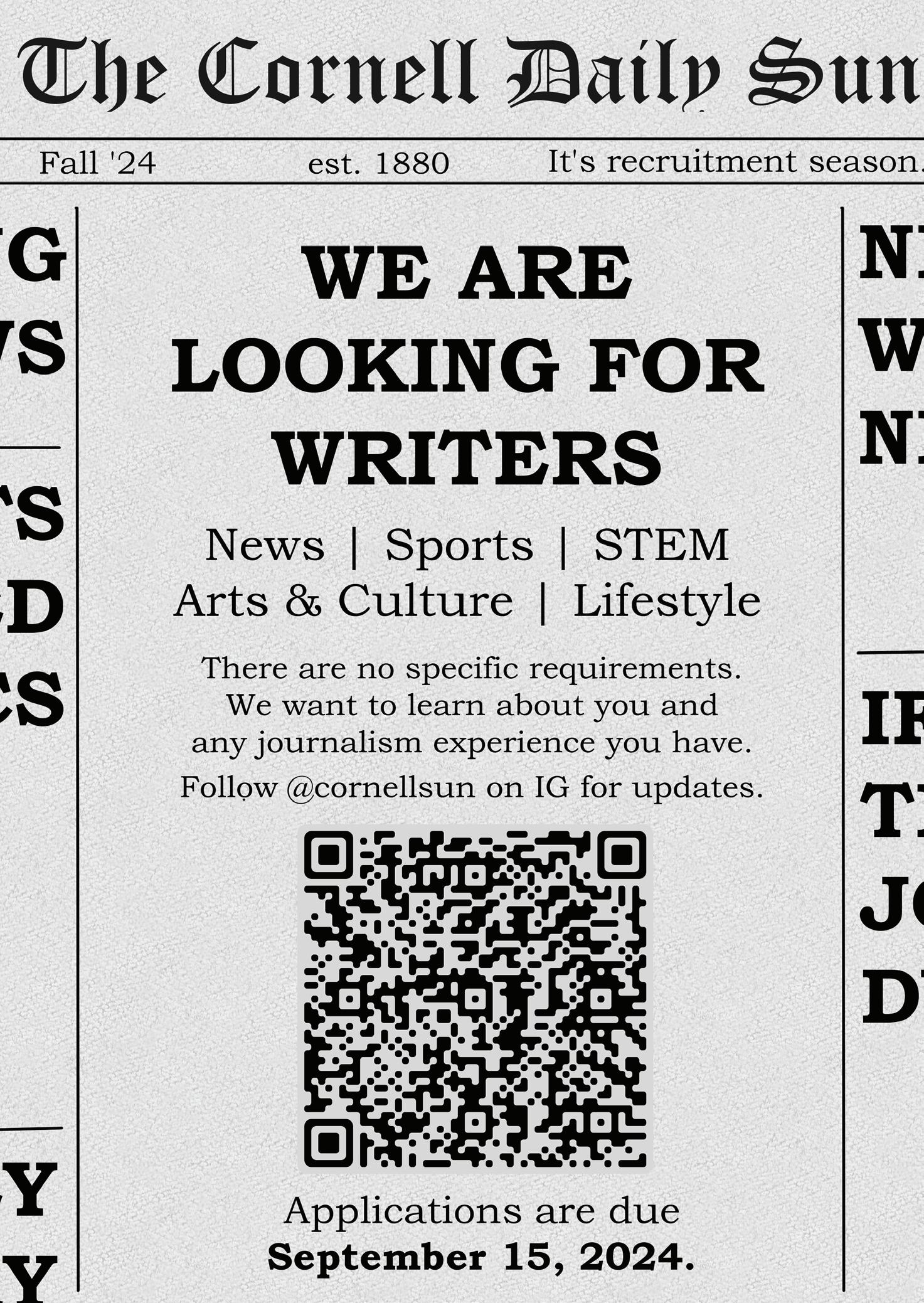





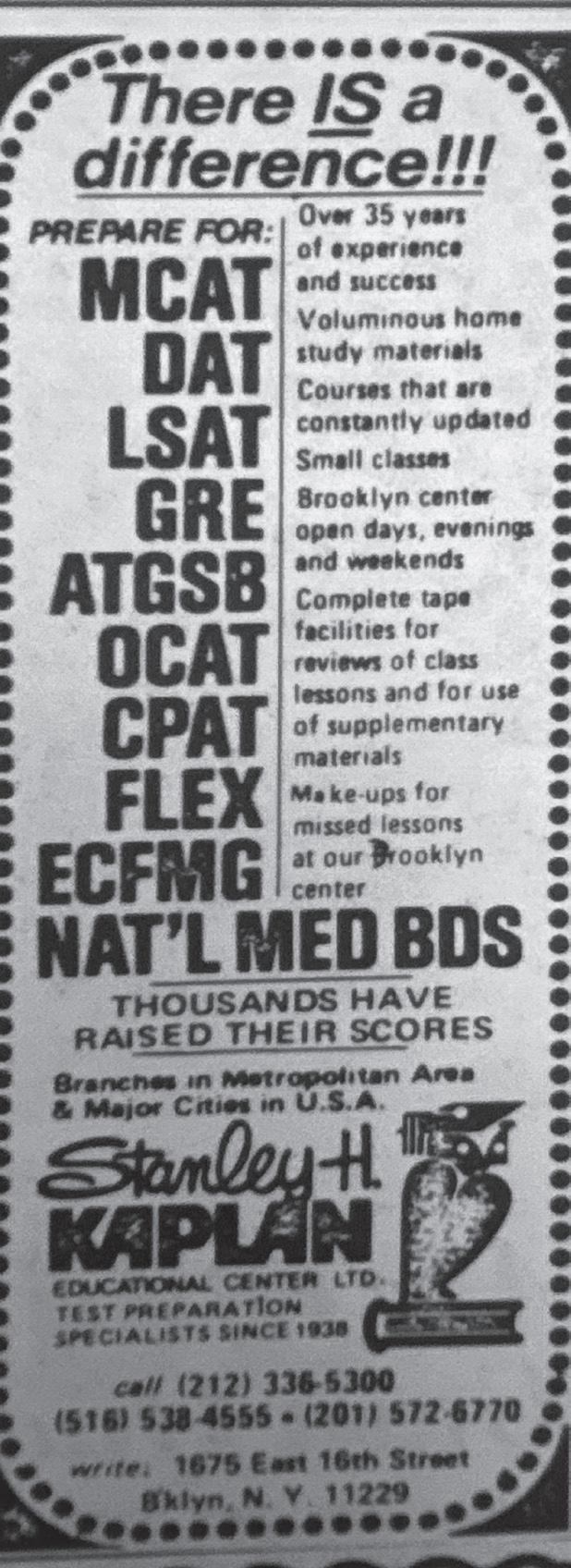

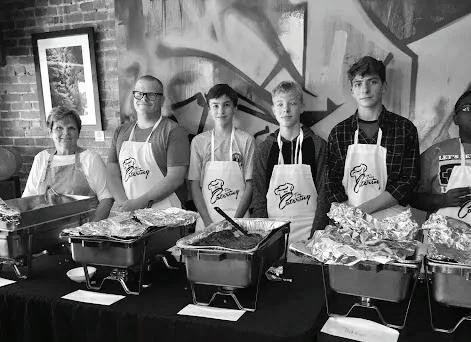
By KIRA WALTER Sun Lifestyle Editor
Sept. 2 — Strolling around the corner of West Court Street and North Albany, it is hard to miss summer expansion projects happening at the Greater Ithaca Activities Center. As day camp and basketball leagues continue, GIAC directors prepare for the introduction of a new recreation center.
The location which previously held The Red & White cafe has been transformed to host GIAC’s teen catering program while the houses at 327-329 West Court St. were converted to residential spaces for young women experiencing homelessness.
When asked about the center’s space acquisitions, Deputy Director Travis Brooks expressed pride in this milestone in GIAC’s journey servicing the Ithaca community.
“We’ve always been looking to expand,” Brooks said. “Over the last 25-30 years, people have seen the growth of the agency [and] the success we’ve had and believe in us enough to help us make those things happen.”
Confidence in the GIAC staff has been vital in the collaborative effort to welcome the new rec center. Just next door to GIAC’s original location, this space was purchased from Ithaca Neighborhood Housing Services in 2018. The five-year renovation has included the installation of a recording studio, a screen-printing room, two lounges and a fully furnished gym.
The rec center notably introduced the Rashad Richardson Indoor Basketball Court, named to commemorate a beloved Boynton Middle School student who died in 2001. At 12, Richardson was an avid participant in GIAC programs when he was killed in a tragic revolving door accident. Through this dedication, GIAC continues to preserve Richardson’s legacy as its downtown reach grows.
The establishment of the new rec center enables GIAC to accommodate programs geared towards teenagers in their new location, as GIAC’s primary location is more concentrated on hosting youth activities. Teen programs that once took place in shared or borrowed spaces now have an official home.
Rahmel Mack, a member of the GIAC team, was particularly looking forward to the center’s introduction. After over 16 years as a program leader for 9th through 12th graders, Mack appreciates how new resources center on teens.
“Teens in Ithaca are one of those demographics that are underserved,” Mack told The Sun. “In my opinion, Ithaca is designed for senior citizens, college students and kids. [For] 9th through 12th grade, … you gotta figure something out.”
As a member of a local band — Empire Kings — Mack was thrilled about the increasing access of a music studio. He explained that interested teens can pay an annual fee to join the after-school program and gain access to all rec center facilities. The new rec center reduces the limitations imposed by the previous
Sept. 3 — Loyal patrons of the Hammerstone Carpentry School for Women gathered at 720 West Green St. on Monday, July 15 to celebrate the opening of a second location with a ribbon cutting and words of gratitude.
Since its farmhouse founding, the business has aimed to empower female students in skilled trades work, a field typically dominated by men. As supporters helped themselves to Que Sera cheese boards, owner Maria Klemperer-Johnson welcomed Hammerstone’s future with a walk down memory lane.
she admitted that introducing carpentry to children is no easy feat, both organizations have worked with Hammerstone to make the trades more accessible to young women.
Klemperer-Johnson also thanked Open Doors English for collaborating with Hammerstone since 2016. The language school has worked with KlempererJohnson and associates to run a free course for immigrants in the Ithaca area. As increasing female employment in the trades is a core attribute of Hammerstone’s mission, this program is a subject of immense pride for its coordinators.
limitations and allows GIAC to involve more young people from the local community in their program.
“Because we have more space, we can up the [program] capacity to when registration closes,” Mack said.
Another GIAC space for teenagers is the newly acquired Red & White Cafe. Once occupied by a classic Ithaca restaurant, the building at 402 West Court St. will now be home to GIAC’s teen catering program.
For 10 years, teen caterers have traveled around Tompkins County, preparing food for Cornell, Ithaca College and other city entities. Teams of twenty to a couple hundred young chefs and servers commute to new venues, gaining direct experience in professional food service.
When the Red & White Cafe appeared on the real estate market, Pre-Teen and Teen Program Coordinator Jay Stooks seized the chance to make it an opportunity for GIAC’s programming. Although the original recreation center has a full-size commercial kitchen, it is primarily dedicated to the afterschool program. Initially, GIAC’s 50 served initiative provides kids with snacks and a well-balanced meal daily. With the addition of a separate space allocated to teen catering, the program can accommodate many more members in future years.
“We’re trying to have it be a community space where we can have meetings, bring people together over food and have training for young teens, to give them that work experience,” Stooks said.
In addition to the catering program in the cafe space, GIAC also established an upstairs art gallery open to the public. Stooks also plans to preserve the former restaurant’s Friday Fish Fries, a tradition that many in the community miss. Cafe renovations are still underway but the teen business is predicted to operate within normal hours by the start of next summer.
Across the street, GIAC renovation plans are also scheduled for the house at 327-329 West Court St. Although this residence only became GIAC-owned in 2024, directors have been looking to purchase it for 15 years.
The GIAC staff hopes this building will create both workforce housing and a place where unhoused young women can seek shelter, inspired by the organization’s history of helping women in difficult situations.
“We’ve had a program for some time where we worked with the sex trafficking task force for New York. We had staff who were heavily involved in it,” Brooks said. “It became very clear to us that this was a need. If we could acquire this property, we could help address it.”
To continue reading this article, please visit www. cornellsun.com
Festivities at this new space marked the 10-year anniversary of Hammerstone’s founding. Klemperer-Johnson began the school after Trumansburg resident Liz Coakley approached her about constructing a tiny house. After started a Ph.D. in geology at Cornell, Klemperer-Johnson transitioned into the carpentry industry.
In early 2013, the pair hung flyers at GreenStar Food Co-Op and Gimme! Coffee and were pleasantly surprised when classes filled within their first two weeks. The school officially began instruction later the same year.
The addition of the new downtown location was a necessary step in expansion, according to Klemperer-Johnson. The Hammerstone team particularly looks forward to having a comfortable space for the winter, as the barn lacks insulation to keep students warm. The new location will allow teachers to expand programs throughout the entire year.
“This larger winterized space allows us to get more tools, more table saws [and] more chop saws set up and usable,” KlempererJohnson said. “So we can expand a lot of our woodworking classes.”
Kimberly Wiman, Hammerstone’s social media maven, also explained that the new location ensures an easier commute for students.
“We want to make our classes more accessible to people who aren’t able to drive to a rural area,” Wiman said. “We’re hoping that this location [which is] accessible to transit will open that up.”
Accessibility is one of Hammerstone’s central goals as a business that caters to women and non-binary individuals. One way the carpentry school works to achieve this goal is by partnering with other organizations that serve the Ithaca community.
During the opening ceremony, Klemperer-Johnson expressed appreciation for local Girl Scouts troops, The Youth Farm Project and the Lehman Alternative Community School. Although
Hammerstone also adjusts tuition to offer opportunities across different wage demographics.
“We offer sliding scale tuition,” Wiman said. “People who have lower disposable incomes can afford classes and people with more disposable incomes can contribute.”
The school’s popular two-day basic carpentry skills courses are priced at $270 to $570, depending on customer budget. From 9 a.m. to 5 p.m. on two consecutive days, this class introduces carpentry fundamentals while students build a pair of sawhorses.
Building on a legacy of accessibility, Hammerstone leaders and board members have worked to certify Hammerstone as a 501(c) (3) nonprofit. Non-profit status allows the school to accept donations and apply for increased funding.
Ann Ellsworth, chair of the Hammerstone board, said she has advocated for Hammerstone to make this transition for years.
“Hammerstone is going to provide access to women and gender minorities to enter the trades with confidence,” Ellsworth said.
Teacher’s assistant and former student Kelly Cobb credits Hammerstone’s focus on female and non-binary education as key to the business’s success as it facilitates a more comfortable environment for some students.
“I’ve definitely seen students be more open and willing to ask questions that they may otherwise pretend to know the answer to,” Cobb said. “It’s a very welcoming and cohesive environment when the class is focused on female participation.”
Instructors said that it is easier to discuss the conflicts women face in the trades with students since they can relate to the issue personally.
To continue reading this article, please visit www.cornellsun.com
By AYLA KRUSE LAWSON Arts & Culture Contributor
In a summer teeming with charting pop hits, Sabrina Carpenter reigns above all with the witty, raunchy and oh-so-cheeky Short n’ Sweet. Her sixth studio album chronicles the disaster that is the modern dating scene, artfully blending fun, dirty-minded humor with not-so-subtle jabs at bad boyfriends and fakes. She is merciless and withering behind her sweet façade, showing everyone her confidence and strength. Short n’ Sweet has set Carpenter apart as her own autonomous artist defined by catchy, retro pop riddled with clever, giggle-inducing innuendos. Short n’ Sweet showcases that she has found her voice, and listeners are loving it.
Released ahead of the album, “Espresso” was the spark that ignited her ascent to the upper echelons of the music industry. The groovy disco-pop tune immediately grabbed onto our minds, begging to be replayed again and again (and it has yet to release its hold). Following “Espresso,” the release of “Please, Please, Please” cemented the fact that summer 2024 belonged to Sabrina Carpenter far before the release of Short n’ Sweet. Even with the bar set incredibly high, the album exceeded expectations, delivering a vintage sun-soaked array of songs that are a refreshingly upbeat take on failed love. Carpenter experiences ups and downs, but emerges from these moments of pain a little bit funnier and a little bit smarter and is all too glad to share it with the world.
The first song on the album, “Taste,” leaves quite an impression. Electric beats and breathless honeyed vocals create an immersive song that attacks a partner’s ex after they get back together. Carpenter follows statements like “if you want forever
[...] just know you’ll taste me too” with an innocent “la-la-la-la-la-la-la,” making the song light and funny. But the slasher-esque music video that accompanies the album’s release gives listeners a new, more vicious lens through which to view the song. Her cheery tone signifies that she is no longer hurting, but still wants to have her say.
“Taste” along with “Espresso” and “Please, Please, Please,” sets up the album as something to empower people to let go, be confident and feel free to get mad and a little bit feral.
Following the theme of the album, “Good Graces” reminds us that Carpenter “won’t give a fuck about you.” Taking on a more R&B feel, the song warns people that she is done with the hypocrites and cheats of the world and will simply leave without a second thought at the sign of a red flag. “Sharpest Tool,” “Coincidence” and “Slim Pickins” shift genres slightly as well with a country twang, all telling stories of men and their stupidity. She mourns that some of these men don’t even know the “difference between their, there and they are.” While these guys may be fun at the moment, Carpenter sardonically suggests that they should “just stay inside.” She’s sick and she’s tired, but she does it all with a smile and plenty of blunt jokes.
“Bed Chem” and “Juno” emerge as the two most suggestive, raunchy and silly songs on the album with upbeat tunes conducive to sing-alongs and dance parties. Hidden beneath the sheen of girlie-pop soundtracks, Carpenter casually drops lyrics like “come right on me, I mean camaraderie.” Batted eyelashes and blushes conceal
dagger-sharp wit and creativity which only escalate in “Juno.” The title itself could be a reference to mythology as Juno is the Roman goddess of marriage and childbirth. Referencing pregnancy, freaky positions and fuzzy handcuffs, Carpenter shrugs it off saying “can’t help myself, hormones are high.” She enthralls with a catchy chorus and perfectly articulated double meanings building up to the bridge where she steps away from suggestions, proclaiming, “I’m so fuckin’ horny!” Both “Bed Chem” and “Juno” are simply so bright and fun and will never fail to bring a smile to people’s faces. Carpenter’s “give a fucks” may be on vacation, but they make occasional appearances throughout the album despite her claim that “singin’ ‘bout it don’t mean I care.” The final two songs on the album, “Lie to Girls” and “Don’t Smile” are more vulnerable and heavy-hearted. “Don’t Smile” flips a common cliche on its head where she laments “don’t smile because it happened, baby, cry because it’s over.” “Lie to Girls” exposes Carpenter herself as a source of some of her own heartbreak. But she doesn’t stop there, calling out all girls who give one too many chances or excuses. Lousy partners don’t even need to make excuses because girls “love to read the cold, hard facts and swear they’re incorrect.” The song is a reminder that sometimes the one with the most power to break your heart is yourself.
Short n’ Sweet is built from moments which all fit together to illustrate a chapter of Carpenter’s life. The album jumps genres from country to R&B to pop rock which creates a unique amalgamation of
songs and moments that Carpenter artfully pulls together to produce a strongly cohesive album. She chooses moments that stood out to her choosing not to focus on the fights and the hurt, but the funny moments. After all, humor and moments of joy are timeless. So, while the album may initially appear lighthearted, the softness and saccharinity hold weight. The album may be called Short n’ Sweet in reference to Carpenter’s short relationships that ironically seem to hit the hardest, but it also alludes to the sweetness of ephemerality. It could also be a nod to the album’s 36-minute duration or the pocket-sized singer herself. Overall, Short n’ Sweet is an incredibly fun ride that is unforgivably girly and forward without a single skip. Carpenter’s cheeky humor will have listeners pausing to ask, “did she really just say what I think she did?” Yes, she did. As she said on Instagram the morning of the release, “not a serious thought was thunk yet somehow they were.” Lyrics like “Your car drove itself from LA to her thighs” (“Coincidence”), “Where art thou? Why not uponeth me?” (“Bed Chem”), “I like the way you fit, God bless your dad’s genetics” (“Juno”) “Try to come off like you’re soft and well-spoken / Jack off to lyrics by Leonard Cohen” (“Dumb and Poetic”) and “I showed my friends, then we high-fived / Sorry if you feel objectified” (“Juno”) all say that she may be sweet, but Carpenter bites back with no remorse. Maybe listeners will feel empowered to do the same.
By MAX FATTAL Associate Editor
I’ve been having this recurring dream. I’ll spare some of the details but it involves a clone — of me — a burst of frustration, an expletive and a thrown phone. A momentary, impulsive reflex followed by an anxious awakening. Specifically, I think the clone has become something of a stream-of-consciousness trademark for me: All last fall I found myself recounting and inviting hypotheticals about clones and doppelgangers. What would you do… if suddenly… a clone? It’s a fun way to kill time, and theoretically to learn about other people: How does your brain react to the idea? At the beginning of this year, I watched Ryusuke Hamaguchi’s Asako I & II while diving into his filmography — he seemed to have recreated a clone hypothetical cinematically, and in doing so may have informed the subtext of my recurring dream. Hamaguchi, quite likely the great auteur of the last decade, must have a similar obsession with doppelgangers. In Asako, the titular woman traverses two relationships with men who exactly resemble one another, finding one in the wake of the loss of the other, and then reencountering the first to make for a love-triangle of replicas. Besides the bitter joke of the film’s core literalization (we all might as well be near-identical replacements of former and future lovers and friends), Hamaguchi manages to combine a contradictory sense of divine narrative providence (of fate) with a simultaneous air of improvisation. His films progress from scene to scene with Kubrickian perfection and wholly original chaos. That’s why it feels like a dream or hypothetical: You can always ask questions, choose your own adventure or push
slightly one way or the other, but at the end of the day, it’s your friend’s storytelling or your subconscious that decides where it goes. They dictate as deity, but they are deeply fallible (that is improvisatory) in their style.
In Hamaguchi’s Happy Hour, the five hour runtime gives the film a chance to reach a first act boiling point, followed by a subsequent three and a half hours of post boil bubble and simmer — but first, we find a friend group of married and once married women to have one cheater and another cheated. For the uninvolved, the “happily” married women reflect the same dynamic in miniature. Again, there is reflection with a sense of perfection, but an undergirding frustration that amounts to chaos. Here, the sense of fate is less direct, but characters remain bound by the circumstances of existing friendships and relationships (a rigid fear of loss and change) and by legal and economic structures that minimize the paths forward. They too are in a choose-your-own adventure hypothetical of mirrors and clones.
In this year’s Evil Does Not Exist, Hamaguchi turns his attention to the lack of autonomy that subtly binds his earlier characters. A small town confronting the injustice of an impending and problematic glamping project goes up against company middlemen who are themselves powerless to stop the construction. Those with power have relinquished it, and now the powerless must feel around the borderlines of their own marginal autonomy to see how far they can get. And as the film’s lead Takumi identifies, both sides are again doppelgangers: The community is itself entirely made up of transplants; they resemble the middlemen in that way. When the plot goes on, and makes clear that the transplantation is not facetious on either side, the film, despite an uncharacteristic story and setting begins to resemble Hamaguchi’s
The doppelgangers and mirrors of these films give the cinematic landscape a sense of universal replaceability. Characters, though still fully realized, exist in a context where their experiences are not distinct and their relationships are not “special.” For every expression of love or friendship, every attempt to draw out uniqueness, there is either a mirroring counterexample or a progression from dream to nightmare. Characters are bound by narratives that exploit the forces of societal binding devices, economic incentives and disincentives, psychological needs and a pervading sense of fate that infuses all of their interactions. They are flattened into a tapestry of universal experience.
But I’m also drawn to a scene in the third act of Happy Hour. As two friends attempt to dissuade their third friend’s ex*-husband from chasing after her (she has run away, unable to legally secure a divorce), citing that it isn’t what she would want, a bystander to the conversation jumps in. She chastises the friends for attempting to verbalize someone else’s thoughts (what right do you have to speak for her). The ex-husband, though perhaps psychologically unsound, speaks only for himself. If, as presented above, Hamaguchi’s characters are forced into perpetual reflections of one another, the point is moot — understanding (and speaking for) makes sense. But it’s more complicated than that.
To continue reading, please visit www.cornellsun.com.
Sept. 6 — Beetlejuice Beetlejuice
There are more than a few reasons to beware the long-awaited sequel to Beetlejuice (Tim Burton’s recent ouvre and a dismal track record of legacy-quels first and foremost), but promises of practical effects and exciting new cast members should be a decent enough motivator to give this film a chance.
Sept. 18 — The Substance
Few films caused a greater stir at the Cannes film festival earlier this year than Coralie Fargeat’s The Substance. A strange body horror oddity starring Demi Moore and Margaret Qualley, critics have labeled The Substance at once as a wildly misogynistic travesty and a brilliant instant classic.
Sept. 27 — Megalopolis
Francis Ford Coppola’s long-awaited, wine-funded passion project hasn’t had the smoothest road to theaters. Still, the promise of a dazzlingly chaotic return from the filmmaker behind The Godfather will always be event cinema

Sept. 6 — The Alexander Technique — Rex Orange Country The latest album from Rex already promises to be his most confessional to date. As his longest, most musically varied album, fans can hope that The Alexander Technique reflects a new step forward for the artist.
Sept. 13 — Memoir of a Sparklemuffin — Suki Waterhouse Suki Waterhouse’s “Supersad” has already cemented itself as a delightful, poppy earworm. But there’s more where that came from, in the form of her double album Memoir of a Sparklemuffin. If you already can’t wait, make sure to snag a ticket to The Sparklemuffin Tour, crossing the country this fall.
Sept. 20 — 143 — Katy Perry Katy Perry’s comeback album is already off to a pretty abysmal start — try finding a positive review of the lead single, “Woman’s World,” I dare you. Still, one can hope that Katy Perry can recapture one ounce of the magic that made her famous in the first place. In any case, 143 will make for an interesting story, comeback or failed attempt.

Oct. 4 — Joker: Folie à Deux
The Joker is back, and now it’s a musical. With a first film offering a hollow pastiche of Scorsese’s King of Comedy, one can’t help but hope that this entry attempts a rip-off of the little seen and overlooked New York, New York.
Oct. 11 — Saturday Night
Saturday Night assembles a wide variety of Hollywood wunderkinds (Gabriel LaBelle, Finn Wolfhard, Cooper Hoffman and Rachel Sennott among them) to reenact the opening night of SNL. Buyer beware, however — director Jason Reitman hardly has an exciting enough track record to inspire confidence in this interesting sounding project.
Oct. 18 — Anora
Forget the Olympics, the U.S’s best showing this year came in capturing the Palme D’or at Cannes for the first time in over a decade. The film, Anora follows the romance between an exotic dancer and the son of a Russian oligarch.
Oct. 25 — The Nickel Boys
Based on Colson Whitehead’s Pulitzer Prize winning novel, The Nickel Boys documents life at a semi-fictionalized segregated reform school in the Jim Crow south. Early festival reactions have been overwhelmingly positive, to the extent that its already in early best picture discussions, so keep an eye out.
Oct. 4 — Leon — Leon Bridges
On Oct. 4, Leon Bridges looks to bring his neo-soul vocals back into the public eye. After over three years away from the recording studio, Bridges will release Leon, an album returning to his Texas roots and reconnecting with the Black community.

Sept. 27 — Mind of a Country Boy — Luke Bryan
After taking a few years off, country star Luke Bryan is returning with an album that offers “a little bit of everything.” Luke Bryan needs no more fans, but this might be a great entry point for Cornellians looking to get into country music.

Oct. 4 — Moon Music — Coldplay
Already making news as the most expensive album ever made, Coldplay’s Moon Music has fans hoping that the cost won’t be where the story stops. And the stakes are high — many have speculated that this will end up being Coldplay’s last studio album.
Oct. 18 — Music for People Who Believe in Love — Joe Jonas
For those who grew up with the Jonas Brothers, October will be a time for bittersweet nostalgia. Joe Jonas, with the blessing of his brothers, will be trekking his own course with his second studio album. This isn’t the same Jonas as we last saw him — and one has to wonder what a decade of new experiences and insights looks like.
Oct. 18 — Shawn — Shawn Mendes
In 2022, Shawn Mendes cancelled his Wonder tour to focus on his mental health. Now, he’s returning with a new eponymous album recorded across time and place. As long as no one tells the Leonard Cohen and Jeff Buckley fans that Mendes is covering “Hallelujah,” nothing can stand in his way.
Oct. 25 — Patterns — Kelsea Bellerini It’s not a new Noah Kahan album, but country-pop star Kelsea Ballerini collaborated with him for her latest, Patterns. For it, she recruited an all-woman team of producers and songwriters to attempt something entirely unexpected.
By SYDNEY LEVINTON Arts & Culture Editor
It had been five years since Social Cues . As an avid Cage The Elephant fan, the near silence from the band was concerning — were they ever going to make music again? Finally, the band announced they would be releasing Neon Pill in May of 2024. I anxiously awaited the album, thrilled to hear new music with that classic Cage sound. On release day, I tuned in … and while that was definitely Matt Shultz on the mic, what I heard didn’t sound like a Cage The Elephant record to me. Don’t get me wrong — the band still sounded great. But after the (more than warranted) hiatus and subsequent drought of new music, I couldn’t help but feel like something was missing from Neon Pill. After a few more listens and a return to their earlier music, I realized what that was: nostalgia. Cage was one of the very first alternative rock bands I listened to, and that meant my early encounters with them involved their oldest records: their namesake debut album, Thank You Happy Birthday , Melophobia and Tell Me I’m Pretty . So, to celebrate their return and experience that nostalgia, I gave Melophobia another listen.
“Spiderhead” is an aggressive start to the album and one of my favorite songs off Melophobia . The
By JENNA LEDLEY Arts and Culture Writer
chaotic, grungy sound of the song perfectly captures the confusion that is created by a toxic relationship. “Come a Little Closer” is less in your face than “Spiderhead” but still maintains that signature grungy sound. It has a catchy chorus with a creepy vibe that completely works. According to Shultz, he was “inspired by the thought of things appearing different at first and then seeing them in a new light.”
“Telescope” is slower and softer, providing the album with a bit of diversity. It features pretty but simple instrumentals, and Shultz has explained that “it has strong roots in that feeling of imminent doom”; in other words, it’s the quintessential moody Cage The Elephant track. Melophobia picks back up with “It’s Just Forever” featuring Alison Mosshart who comes in during the refrain. It’s rare to hear a female voice in a Cage song, so “It’s Just Forever” is definitely a refreshing addition to the record.
“Take It or Leave It” picks up over the course of the song along with Shultz’s voice. Here, he tells his partner to stop playing with him and commit to their relationship, continuing the theme of confusion presented in “Spiderhead.” He sings, “Maybe I’m fooling myself and you’re already gone / Watching the flames wither and fade / Trying to make sense of the look on your face / I’m down on my knees just praying that I can hold on.” “Halo”
As we enter into a new academic year, Jewish students are feeling apprehensive. Last year was undeniably difficult, as college campuses world-wide were flooded with antisemitism. However, these challenging times also taught us that we are not alone. Since the atrocities of October 7th, the “rise of antisemitism and anti-Zionist rhetoric is inspiring Jewish pride and solidarity with Israel,” states Dr. Mijal Bitton, who is directing the first national study of Sephardic Jews at NYU. Dr. Bitton wrote that Jewish students are, ”rediscovering that they belong to a rich history of Jews who experienced othering and expulsions but whose greatest strength was in each other.” For example, Hillel Ontario, the largest Hillel in the world, saw a 40% increase in student engagement last year, highlighting, “the critical need for Jewish connection, safe Jewish spaces and a strong response to anti-Jewish hate and intolerance.”
However, since Jewish students cannot be at Hillel or surrounded by friends every moment, they should have something similar on hand - a collection of songs filled with reminders of the strength of the Jewish people and community.
1. The Maccabeats: “We’re Still Here (Am Yisrael Chai)”
2. Liel Kolet: “Jerusalem of Gold”
3. Omer Adam: “Tel Aviv”
4. Matisyahu: “One Day”
5. Eden Golan: “Hurricane”
6. Andrew Lloyd Webber: “Close Every Door”
7. Shimon Smith: “Avinu Shebashamayim”
8. The Maccabeats: “Hatikvah”
is another one of my favorites from this album, and is also similar to “Spiderhead,” both in sound and theme. Shultz said of the song, “I wanted to write about something that you struggle with and battle to get away from, but I wanted to make it sound like it’s about a relationship, even though it’s not.”
“Halo” is followed by “Black Widow,” an upbeat track featuring a falsetto-pumped chorus and a fun horn element. “Hypocrite” is another soft track where Shultz’s voice is the song’s centerpiece and has a clear quality that can’t be found elsewhere in the album. “Hypocrite” also includes an allusion to The Beatles’ “Strawberry Fields Forever” in the line: “I won’t ever do that again, I’ve been all over the place / I watched the strawberry fields dry up and wither away,” suggesting the disappearance of childhood innocence. This song stands in stark contrast with “Teeth,” a louder, more punk-infused track with a long monologue outro. Shultz shared that this track “is about the vibrancy of life and how things are changing,” going on to say that for the monologue, he conducted an “experiment” where he told his friends to “just speak from their hearts” and took words out of that experiment.
Melophobia concludes with “Cigarette Daydreams,” one of Cage The Elephant’s most well-known songs. “Cigarette Daydreams” is a
completely different animal than the rest of the Melophobia tracks — it’s not Cage’s usual style, yet I couldn’t imagine anyone else performing this song in such a right way. There’s a reason for this: Brad Shultz, Matt Shultz’s brother and rhythm guitarist for Cage The Elephant, explained that Matt “was talking about maybe using it for something other than Cage … this was a moment of realization like, ‘Why do we have to write Cage The Elephant songs? We can just write songs, regardless of what style of music they might be.’”
I truly could not be happier that Cage The Elephant is continuing to make music. Even though Neon Pill doesn’t give me the same feeling of nostalgia that earlier Cage albums like Melophobia do, that’s ok. There’s beauty in being able to revisit earlier, nostalgia-filled Cage records and experiencing this new era of Cage The Elephant — and if there’s one takeaway from Neon Pill , it’s that they’ve still got plenty left in the tank.
Test Spins is a weekly throwback column reviewing and recommending classic and underrated albums from the past. It runs every Friday.
Sydney Levinton is a sophomore in the College of Arts and Sciences. She can be reached at slevinton@cornellsun.com.


By JANE
On Feb. 15, 2024, Sun sports editor Jane McNally and writer Hamna Waseem sat down with newly minted football head coach Dan Swanstrom. The interview was intended to be released just ahead of Swanstrom’s inaugural season with the team.
This is Part Two, which details Swanstrom’s philosophy –– the fundamentals of his coaching methodology and how that has adapted and changed over the years. Swanstrom also explains how he believes his philosophy will be implemented at Cornell.
Jane McNally: I guess to start off, if you were to summarize your coaching philosophy in a couple of sentences, how would you do that?
Dan Swanstrom: Yeah, I mean, I think for me and our staff, first and foremost, [I hope] we define [our] selves as teachers and educators first and foremost. That’s the easiest place to start. The most important part of leadership is setting the example. That’s the first level of leadership and I work very hard to bring a staff together, not just myself, that understands [that] the first step of leadership is setting the example. So, we’re teachers and educators. We set the example.
“It’s so exciting to think I can build a program with my visions, bring the people that I want, and create the culture that’s needed to build this sphere.”
Head coach Dan Swanstrom
And then from there, it’s my job to devise a plan of standards and expectations that are tangible to not just the coaches, but the players, and then everyone surrounding our program. And then it is very imperative that our coaches hold the student-athletes accountable to those standards and expectations. And when you do meet high-level standards that we celebrate it like crazy, and then when you drop below the line that we teach and educate what we want from this program, so that’s how I would define it really quickly. Kind of the CliffsNotes of it.
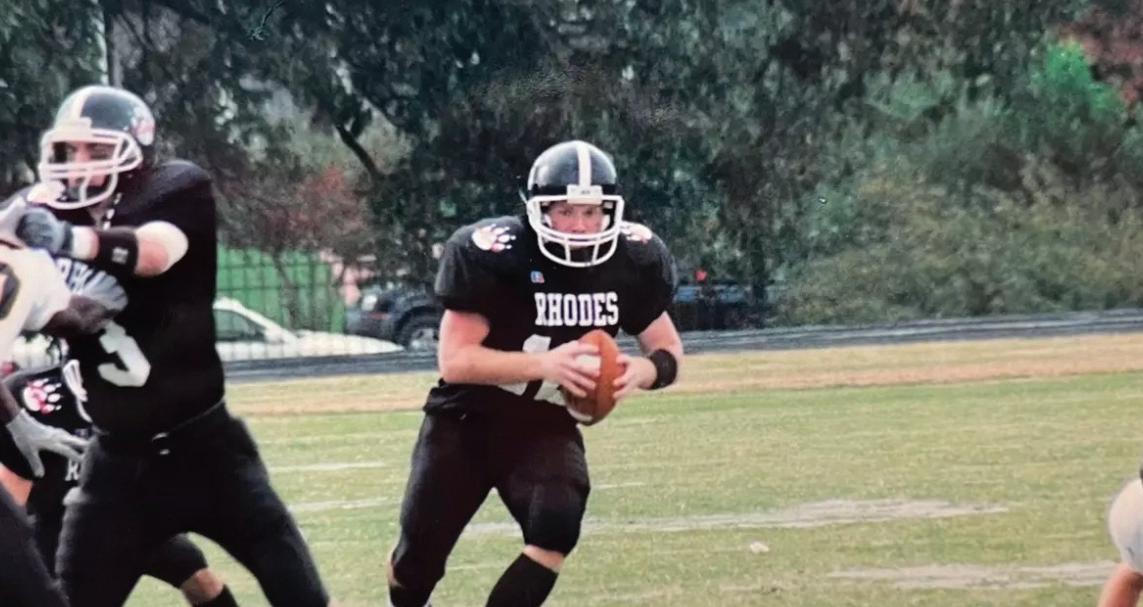
There’s a lot more to it. There’s obviously a lot more layers, but those are just quick step one, step two, step three of like, how you devise your plan, and I think, for me, I think my job starts with the development of the student-athlete. … Obviously, we want to develop them as players and athletes, but we want to develop them academically, we want to develop them socially. So there’s a development piece and then the other part of our job is to recruit the best prospective student-athletes to Cornell, you know, I think if you kind of define your job into those two pieces, then everything kind of falls into place of what your job description is, and then, you know, the other piece of it as well –– what’s the action of that? What’s the philosophy of doing that? Well, you know, set a great example. You’re teachers, you’re educators –– you’re helping a student-athlete also self-actualize their goals through the process. And then having a team actualize their goals as a team, which is the most important thing. And we could go on and on about those layers, but I think that’s a quick CliffsNotes for you.
Jane McNally: Yeah. You talked about holding the
student-athletes to [a] strong standard. What would you say are some of maybe the non-negotiables that you instill as a coach, whether they be on the field or off?
Dan Swanstrom: Well, I mean, there’s obviously non-negotiables that you can’t overcome, you know, and I hope we don’t ever have those problems. But as far as just being at Cornell, you know, we’ve got good young people in this program. And the thing I just truly want instead of just making rules and like declaring, ‘Okay, this is a rule of school,’ like we really don’t have rules. We kind of define what a perfect student-athlete looks like. And then we’re like, ‘Hey, can you hit this? Can you get to that level?’ And it’s different for each individual, like you don’t want to make too many rules. When you make rules, all they want to do is go and break them.
To continue reading this story, please visit www.cornellsun.com.